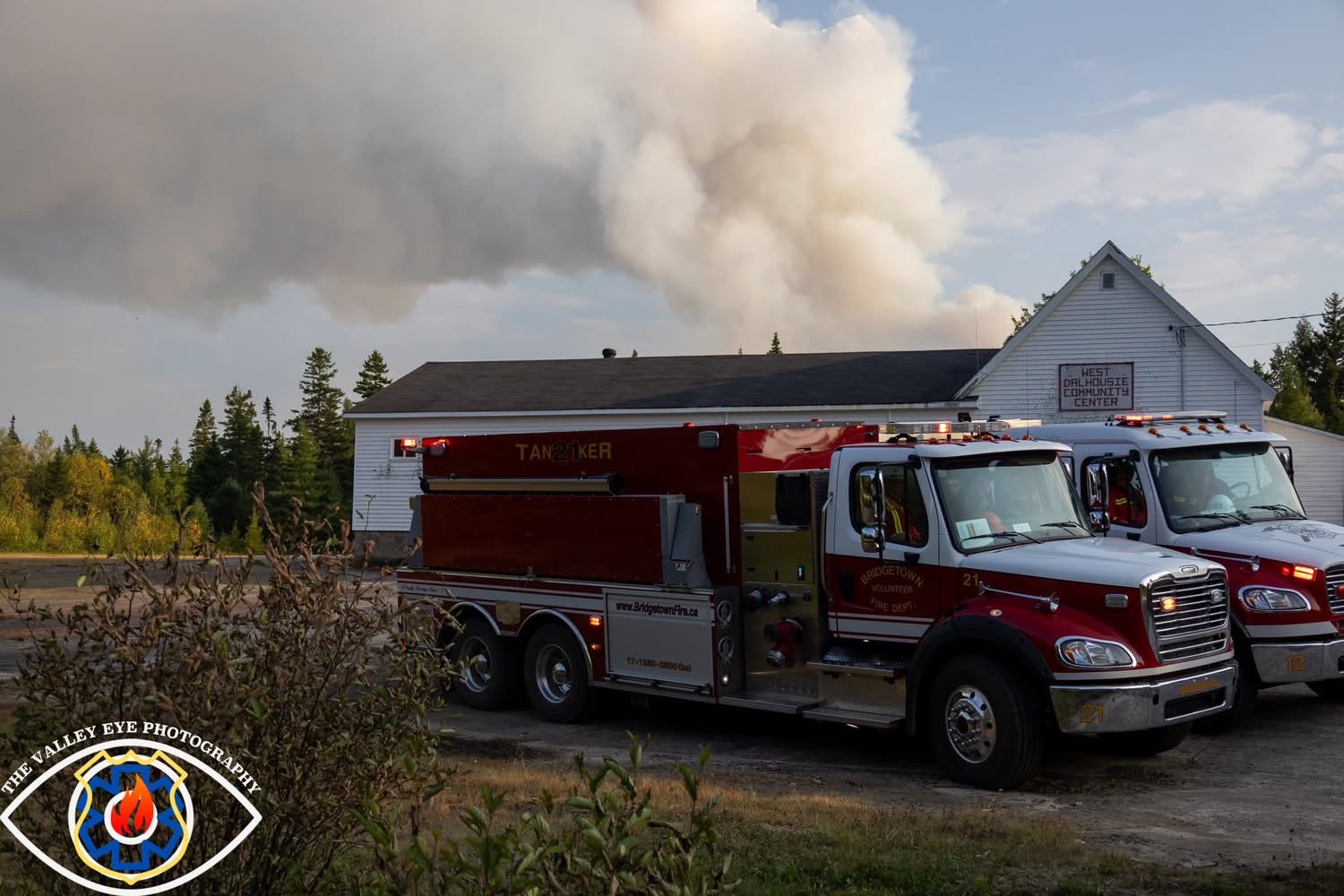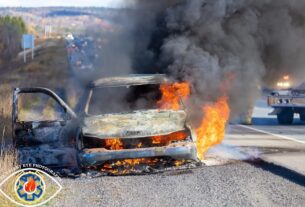Tuesday marked one week—seven days—since the wildfires broke out in West Dalhousie, Annapolis County.
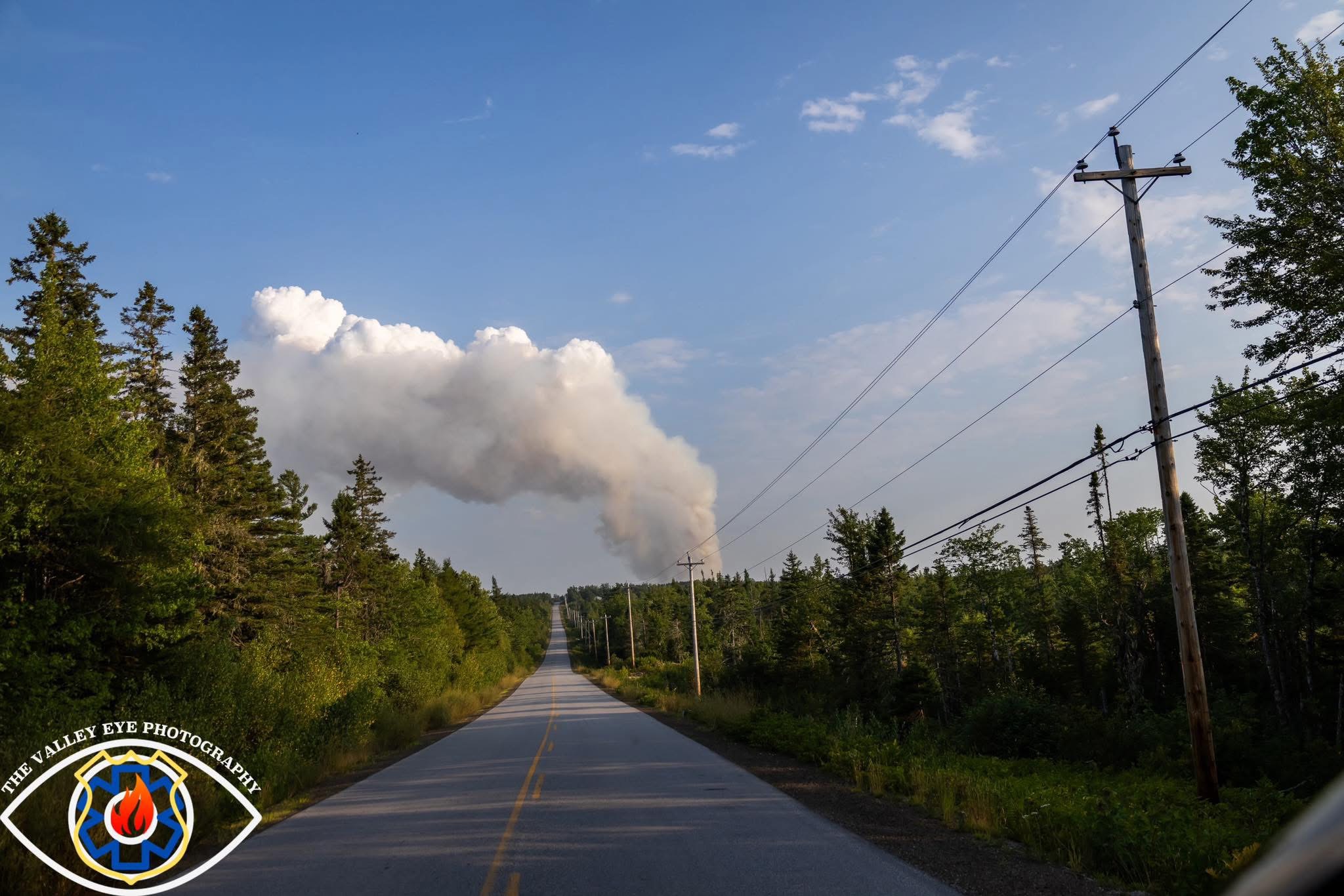
Multiple wildfires had broken out early last week across Nova Scotia, resulting in many close calls and quick responses by fire departments.
The Susies Lake Wildfire broke out just a day before on August 12th. The response brought in Quebec Water bombers who made a quick attack in Bayers Lake – it was nothing short of amazing. On the evening of August 13th, the fire was reported to be held, covering 15 hectares, with lots of work still to be done.
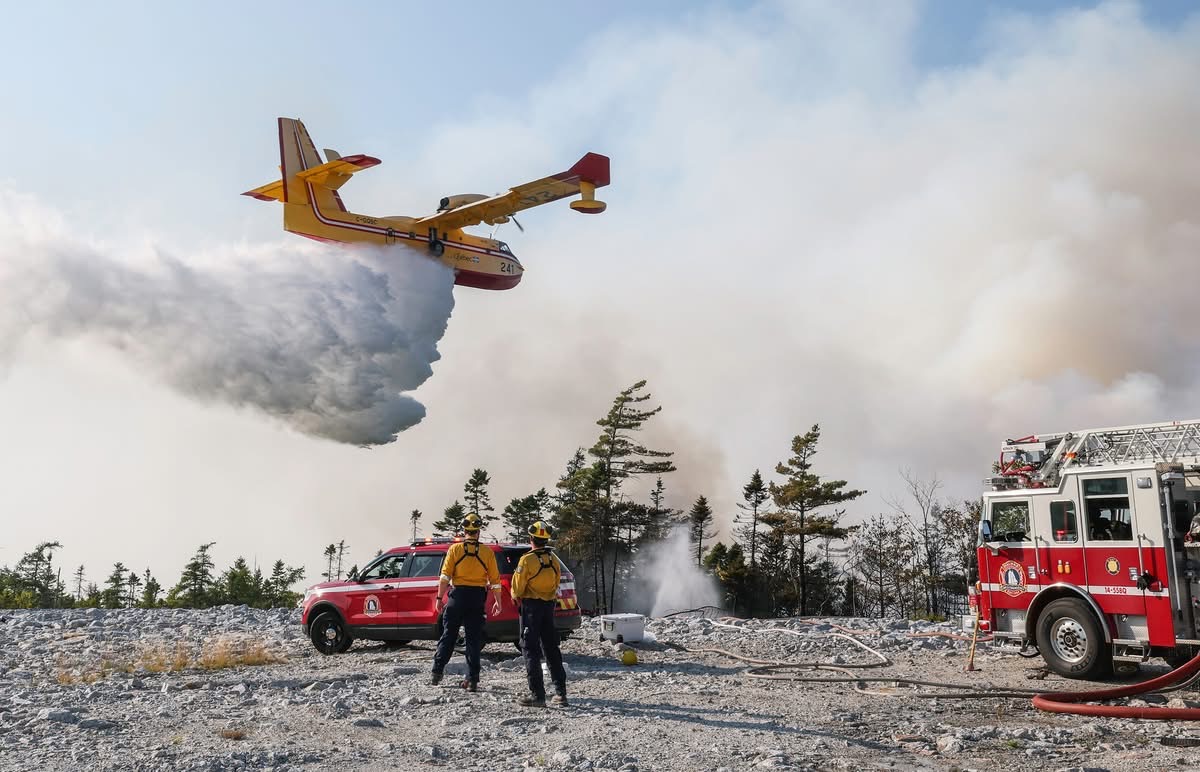
(Photo Nova Scotia Government)
Thanks to the quick acting crews from DNR, Halifax Regional Fire, local authorities, and the swift action of the bombers, no properties were impacted. It was later reported that the fire was a result of human activity.
Two separate wildfires also broke out on the afternoon of August 12th after recent lightning strikes hit the community of Lake Paul in Kings County. These fires were being tended to by Department of Natural Resources (DNR), local firefighters, helicopters, and aircrafts.

(Photo Paul Maynard)
With these two fires being quite remote, firefighting was extremely tasking due to rough terrain, and some initial radio communications difficulties. Thankfully, there were no homes nearby and Public Safety Field Communications was able to enhance radio service.
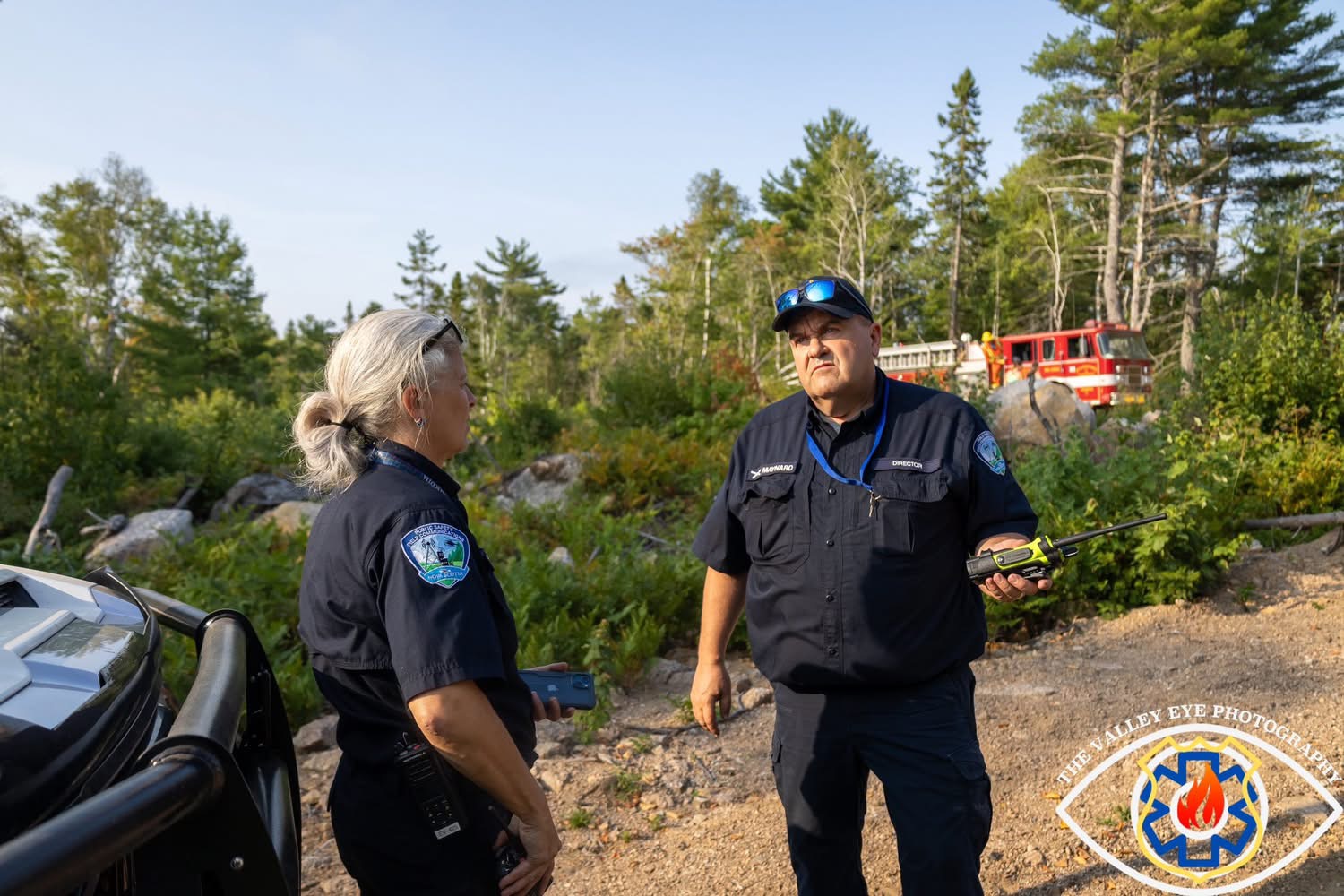
The Annapolis Valley continued to experience lightning with storms popping up throughout the day on August 13th.
The fires in Lake Paul only covered a few hectares and were reported to be under control on this same day thanks to the tireless efforts from dozens of Kings County firefighters, DNR, and the assistance of other agencies.
Everyone was on edge due to the possibility of another fire breaking out as a result of lightning as well as the many resources that were tied up deep in the woods on the fire roads.
On the evening of Wednesday August 13th following lightning in the area, Bridgetown firefighters and Department of Natural Resources (DNR) responded to a woods fire in a remote location off of West Dalhousie Road.
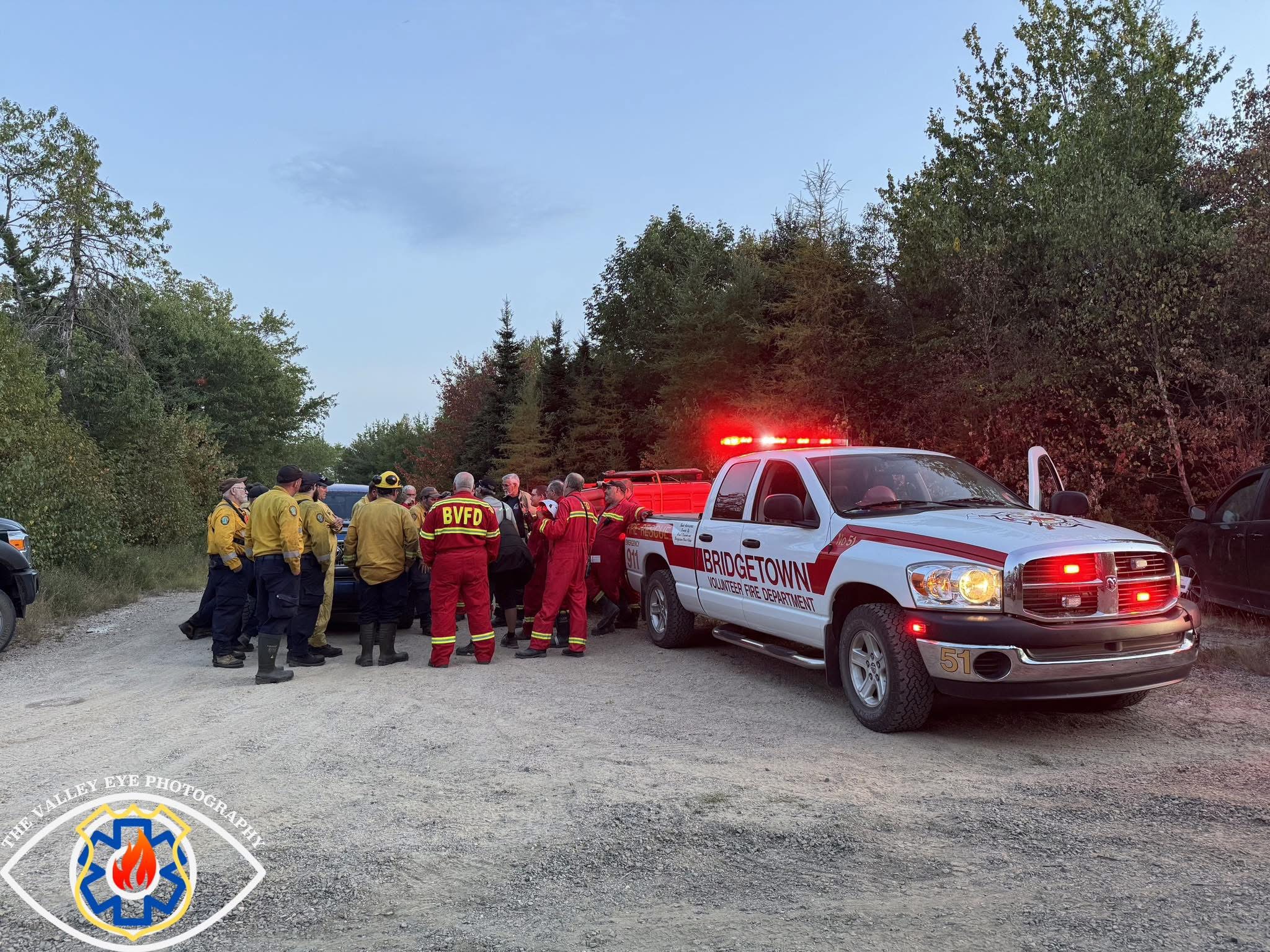
Despite the cloud coverage in the area making it hard to decipher, there was a heavy plume of smoke that could be seen from many communities surrounding Bridgetown.
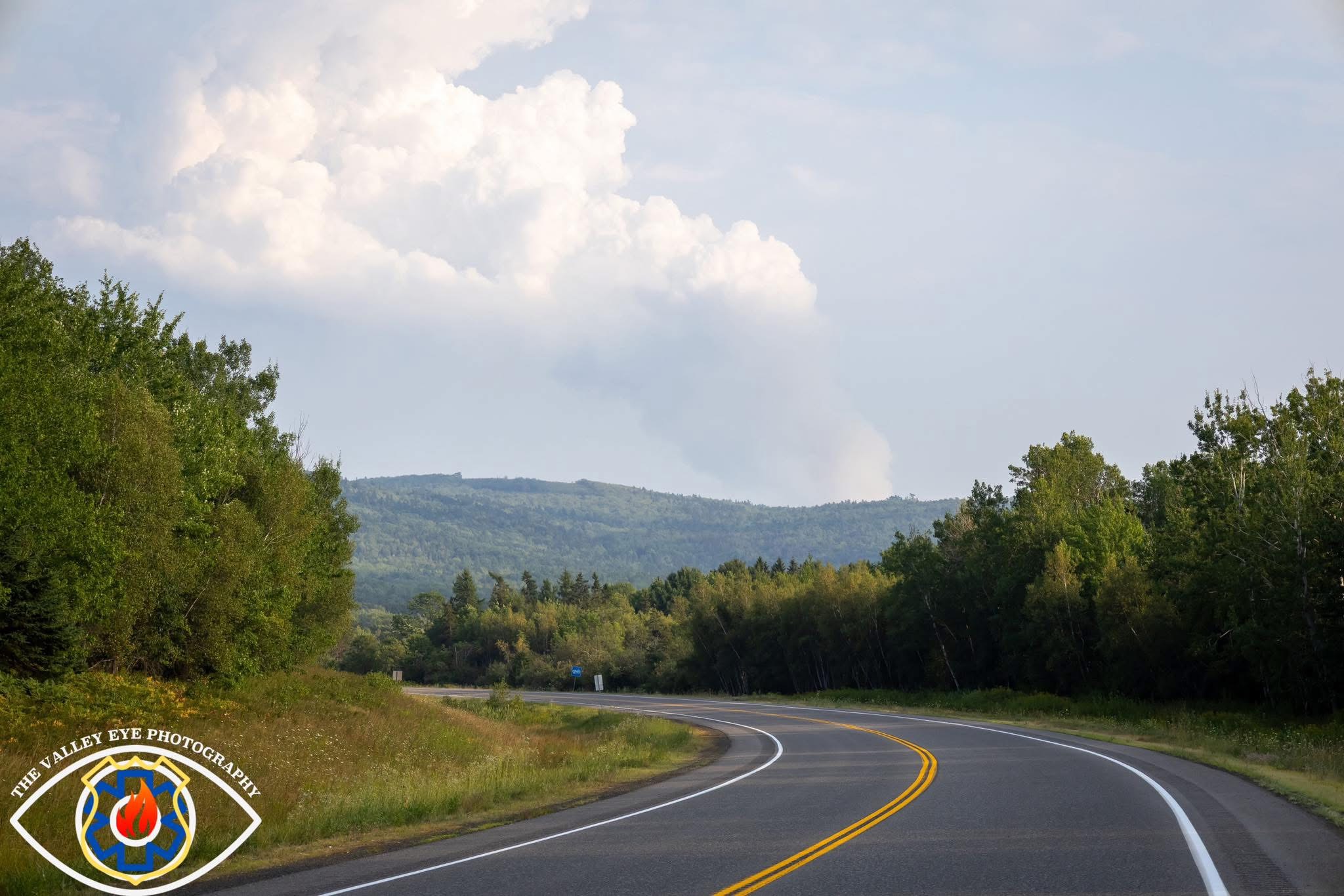
Resources were quickly pulled together to respond to West Dalhousie in an attempt to get ahead of the fire before it spread further.
Five days prior, DNR and Bridgetown firefighters were in the community of West Dalhousie for a wildfire that broke out near the intersection of Morse Road and Neaves Road. This fire was quickly contained, but could have been a different story if it weren’t for the quick response.
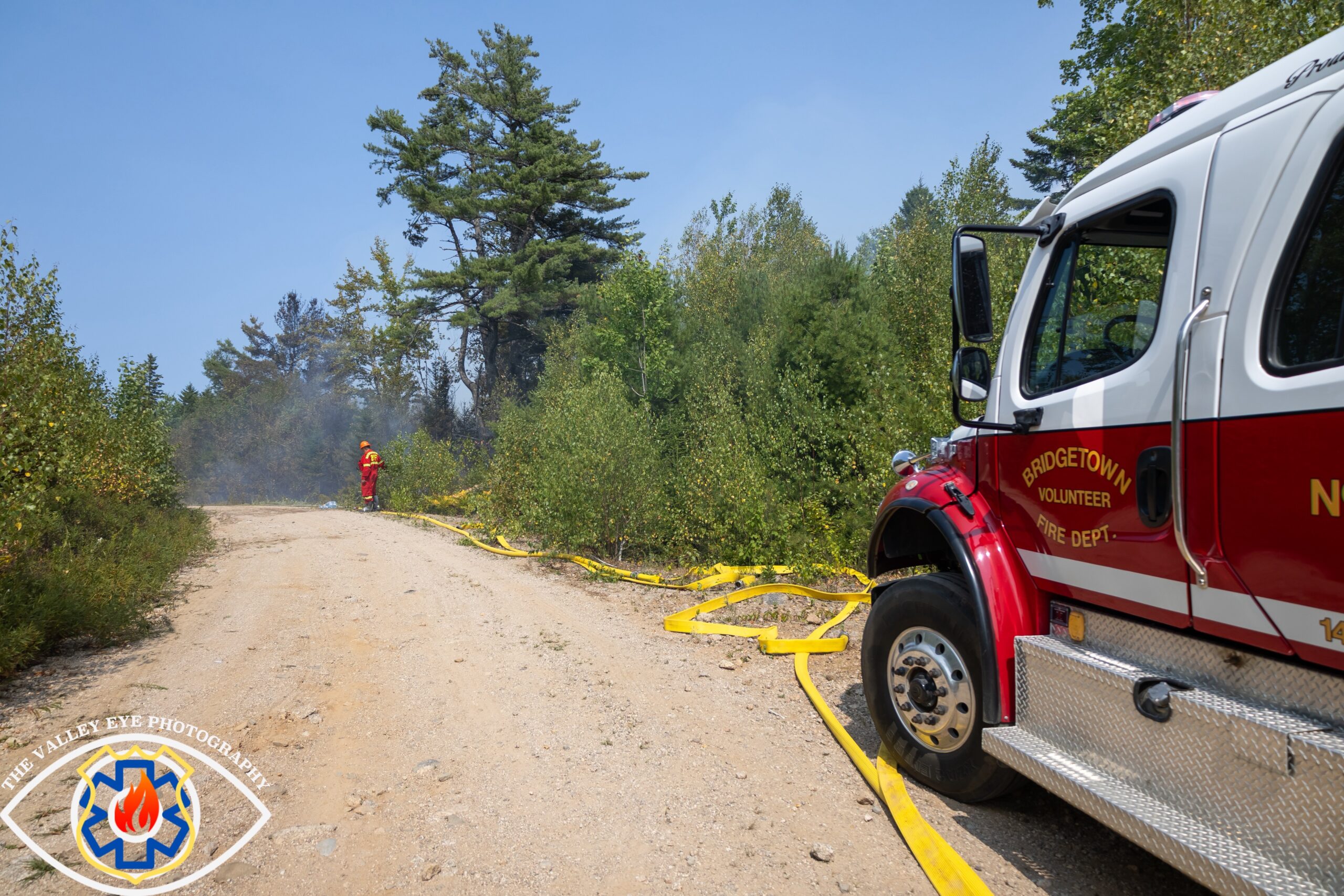
On the evening of the 13th, DNR reported that crews were responding to two fires outside of the Bridgetown area, with one measuring 3 to 4 hectares and the other measuring 0.1 hectares.
Just a short time later, a possible evacuation notice was issued warning residents in the immediate area of the wildfire. The fire was burning near the Godfrey Lake area – only 3 kilometres from West Dalhousie Road. The notice was for residents to be prepared to evacuate in the event of a change in fire behaviour.
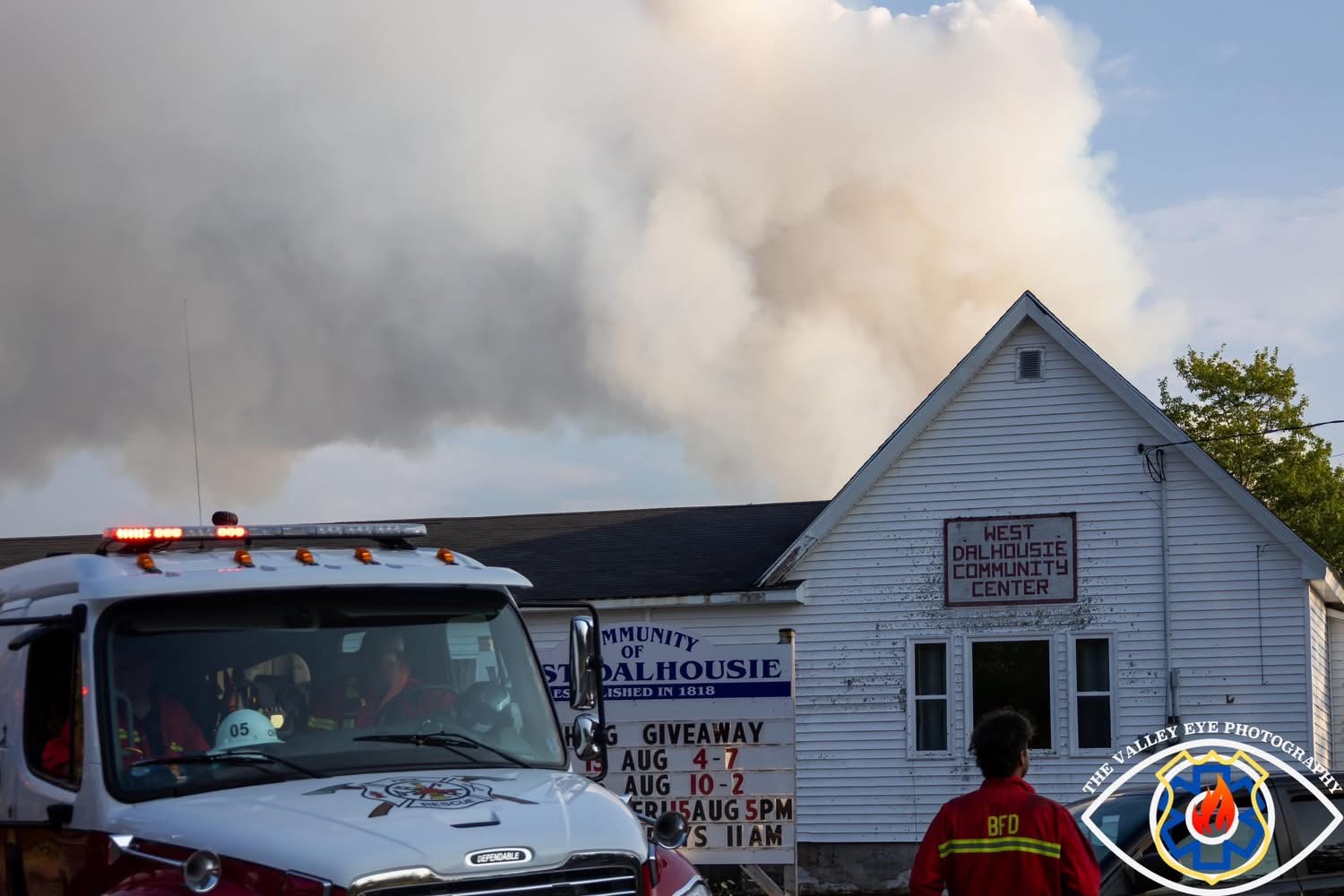
Around 9:28PM on that same evening, DNR reported the fire had spread to roughly 8 hectares, while the other was estimated to be 0.2 hectares in size. The fires were in different locations, but relatively near to each other and both classified as out of control.
Getting exact measurements can be tricky and can change each day depending on fire conditions and many other contributing factors.
To put it into perspective, one hectare is two and half times the size of an average football field.
At the time, the fire was already being fought by one DNR helicopter, but due to the remoteness and lack of daylight, crews were unable to begin fighting the fire by ground despite being able to get to the fire by off road vehicles.
Crews cleared the scene and the fire was monitored through the night with anticipation of larger aircraft by morning.
After the sun went down on the evening of Wednesday the 13th, the glow was noted from the forest along Morse Road and West Dalhousie Road.
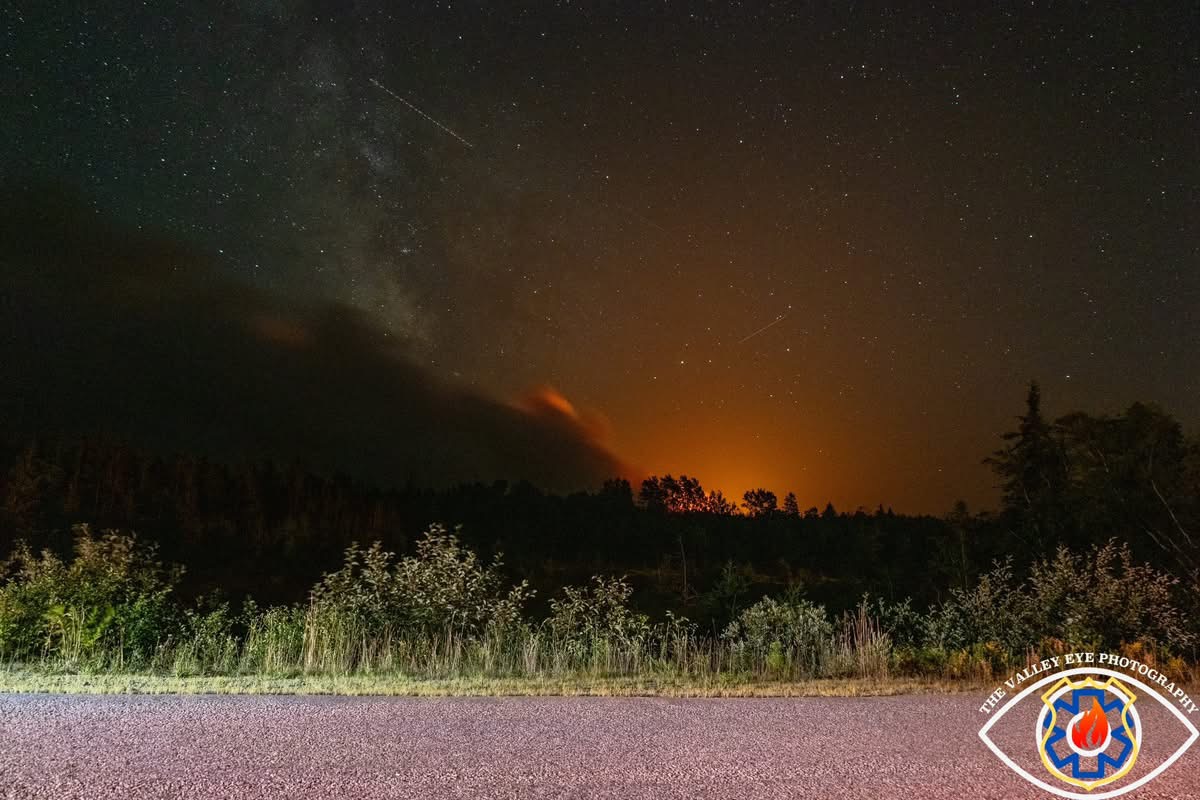
As the night went on, the size of the fire continued to grow with heavy smoke impacting many areas, prompting special air quality statements to be issued the following day. At that time, there were no evacuations that took place.
On the morning of August 14th, a number of agencies returned including dozens of pieces of forestry equipment being used to create fire barriers for two key communications sites along with the West Dalhousie Community Centre.
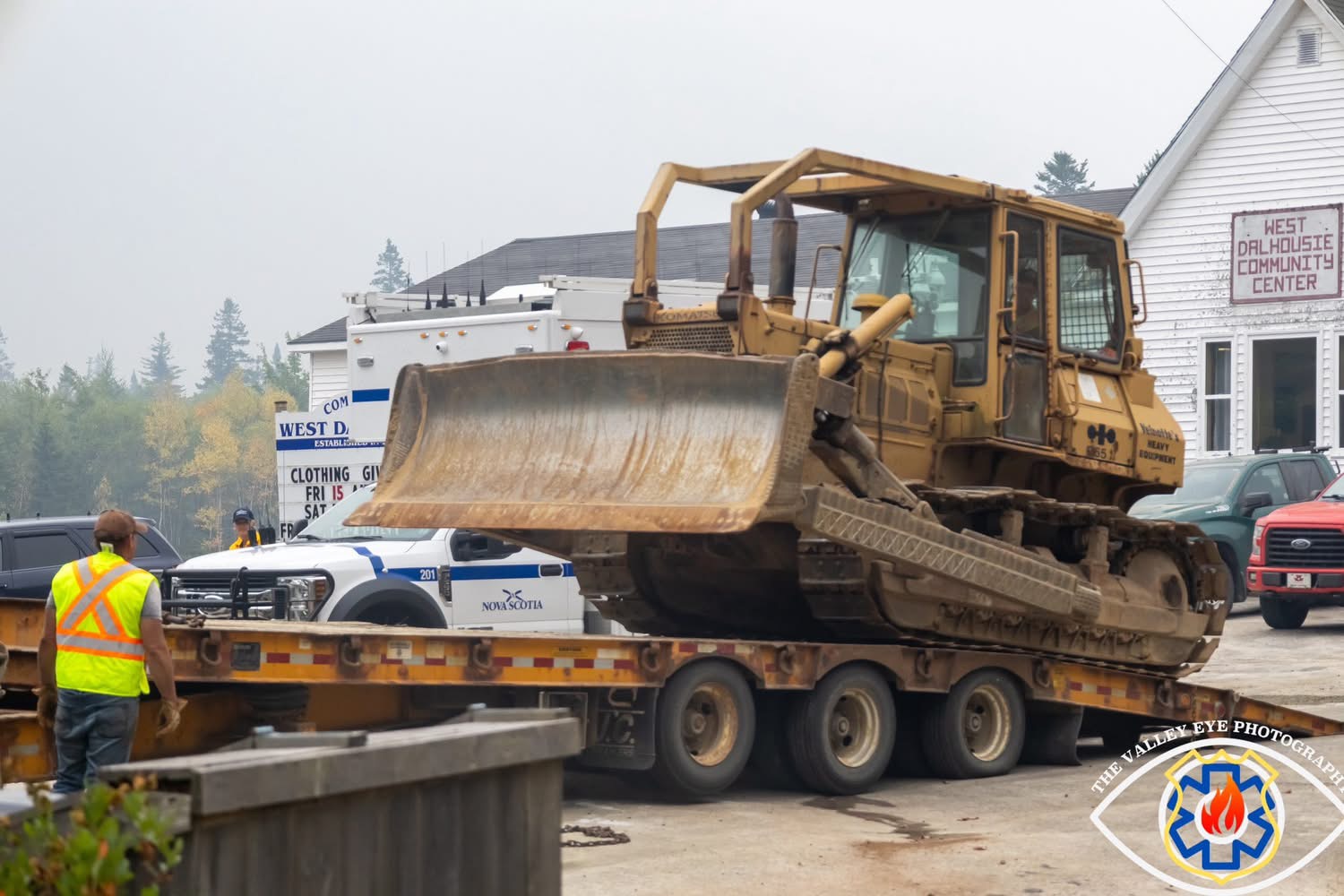
Aircraft was expected but was unable to respond for unknown circumstances.
The wildfire referred to as “Long Lake” had spread to 30 hectares by that morning and the “Hoyt Lake” fire was being estimated at 1 hectare in size, with both still labeled as “out of control.”
The Brooklyn Fire Department from Hants County was requested to assist with their sprinkler equipment to provide structural protection as the fire continued to grow in size. Brooklyn Fire, being one of many volunteer fire departments who assisted Halifax Regional in the Tantallon wildfires, has been a vital asset to the complexity of the ongoing effort due to their prior experience and expertise, as well as their ownership of the sprinkler protection equipment, Halifax Fire has also been a major contributor along with large sprinklers supplied by Aylesford & District Fire.
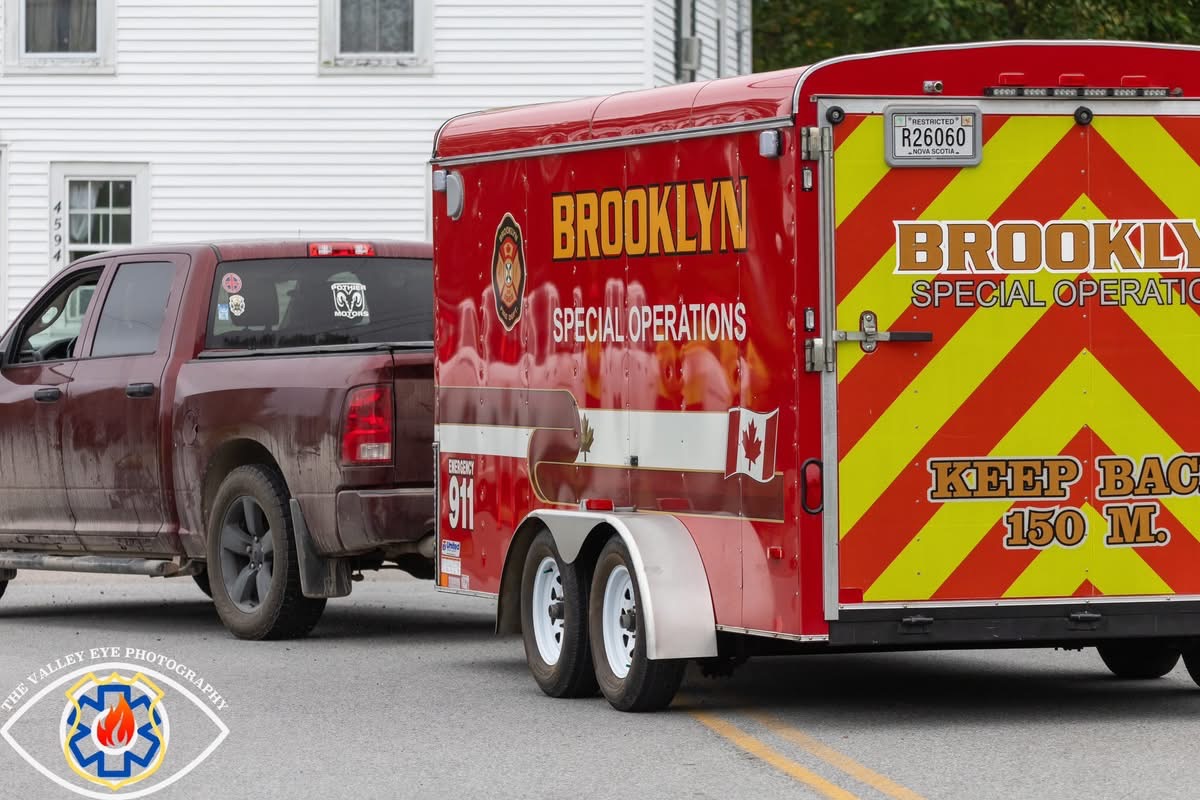
At approximately 10:00AM on Thursday, August 14th, the fire was continuing to spread, prompting an Alert Ready message to be issued for a mandatory evacuation of residents along West Dalhousie Road.

(Photo Department of Natural Resources)
Annapolis Ground Search & Rescue was activated to assist with the evacuation efforts, while Department of Public Works provided assistance with the closure of roads. For accountability purposes, the evacuees were asked to check in at the Bridgetown Fire Hall. During this time, an online form was eventually created for people to register as well.
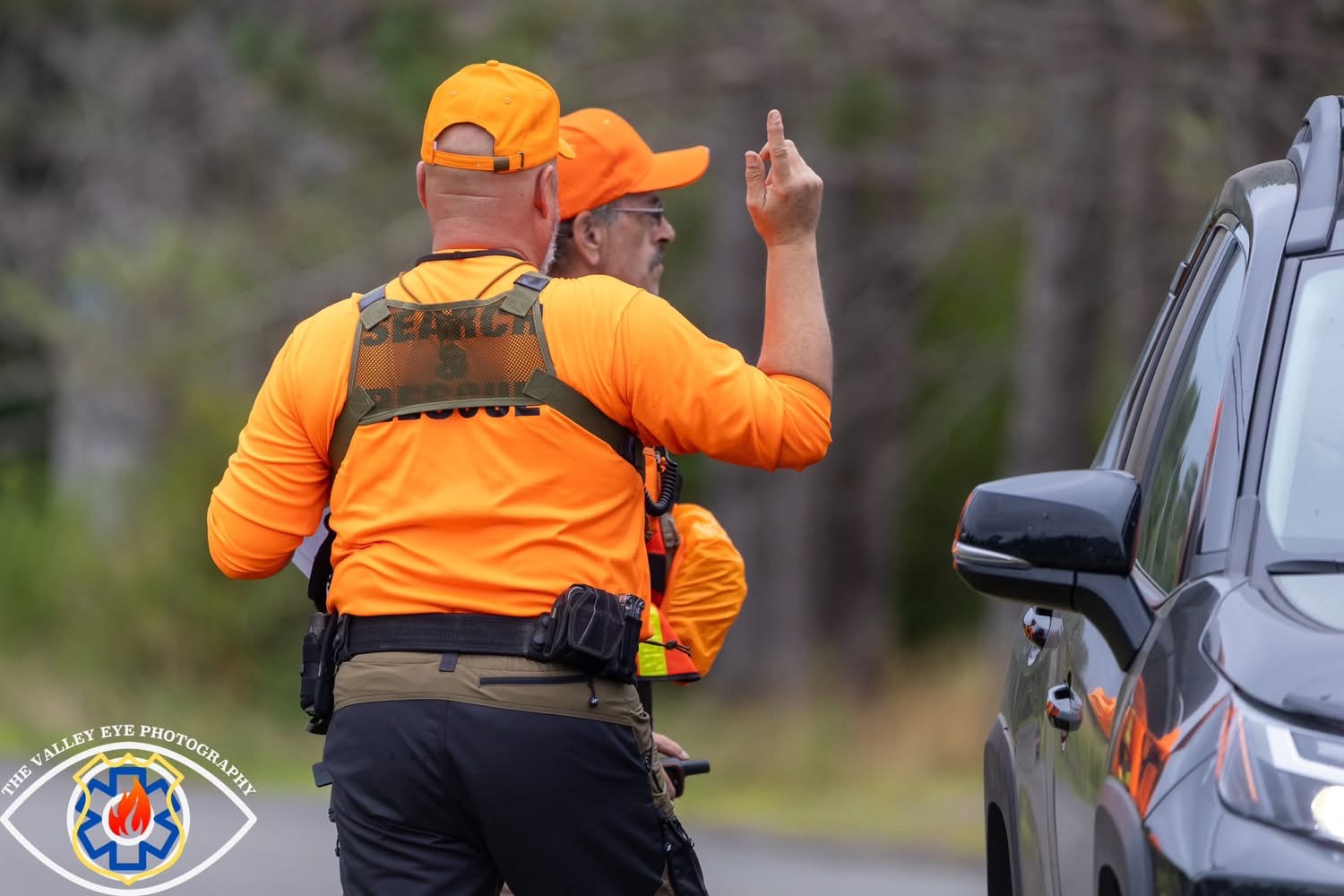
A comfort centre was later re-located at the NSCC in Middleton, which continues to be operated as a registration and reception area. Starting today, donation drop offs and distribution will be out of The Salvation Army Bridgetown Community Church and more information can be found on their Facebook page.
Many wonderful people in our community and surrounding areas have provided a plethora of donations and supports for those who had to leave their homes behind.
By 12:55PM on August 14th, the Long Lake wildfire had grown 10 times in size, now covering an estimated area of 300 hectares, still labeled as “out of control”. It was reported at this time that one DNR helicopter and two contracted helicopters were working both the Long Lake and Hoyt Lake wildfires.
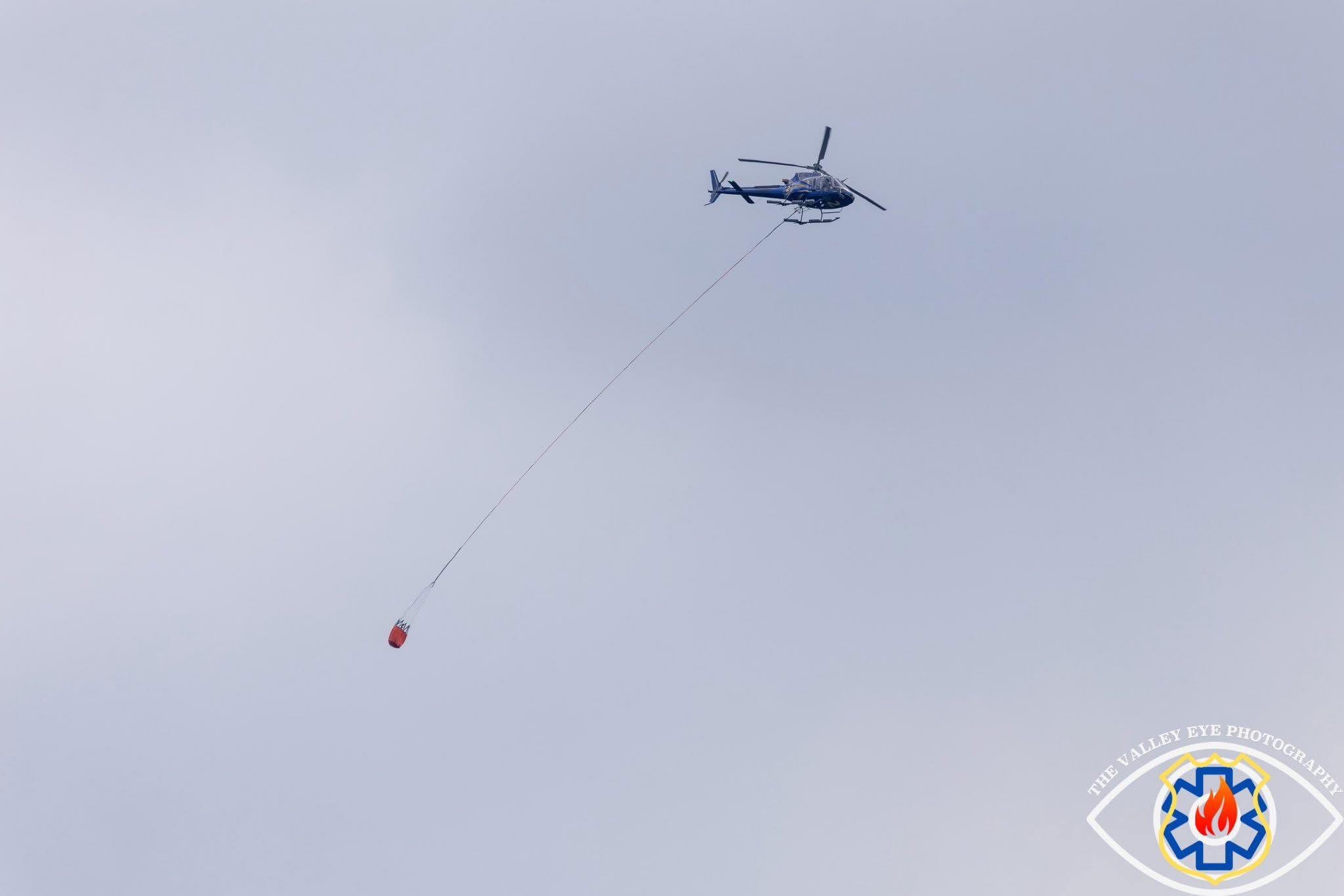
Due to the Long Lake wildfire growth, approximately 42 homes were evacuated while heavy equipment working hard to create dozer gaurds for the community centre, communications sites, and roadways.
By late afternoon, additional volunteer fire departments were brought in to assist with the fight, while the size of the fire remained at an estimated 300 hectares.
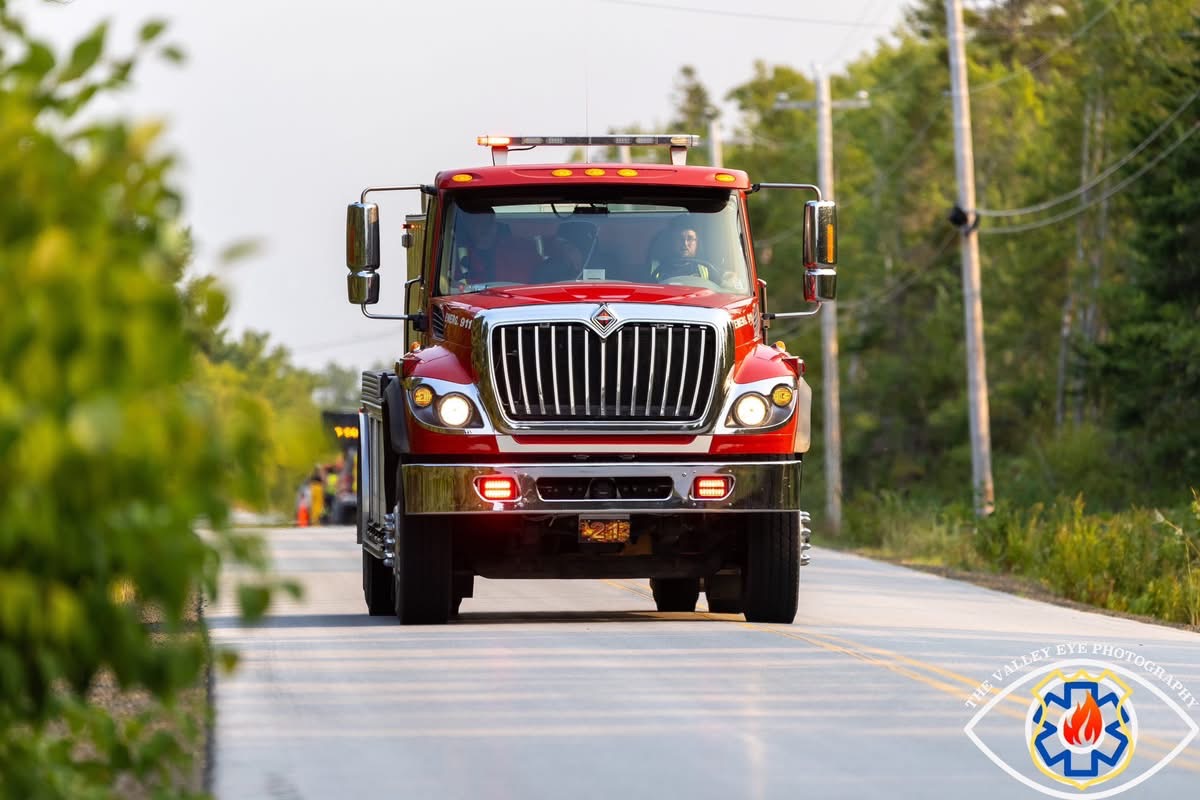
Throughout the day, fire crews and helicopters continued to battle the wildfire, but it was said that the fire only continued to grow as the conditions remained extreme with no rain in the short-term forecast.
Later in the day of the 14th, thunderstorms began to impact Annapolis County. These storms brought heavy down pours, but it wasn’t long after that lightning strikes were also being reported.
Come evening, Lawrencetown Fire was also requested with their aerial device to assist with ongoing sprinkler protection.
Just before 8:00PM on August 14th, another Alert Ready message was sent out. This message advised there was an expansion in the size of the mandatory evacuation. This expansion included West Dalhousie Road, Morse Road, Thorne Road, and Medicraft Lane as the fire had spread to 406 hectares and, per the DNR reports, was said to be burning between Long Lake and Godfrey Lake. During this time, volunteer firefighters continued to put protections in place through the use of sprinklers with the goal of saving structures, and due to this, there were no reported homes or buildings impacted or lost at that time.
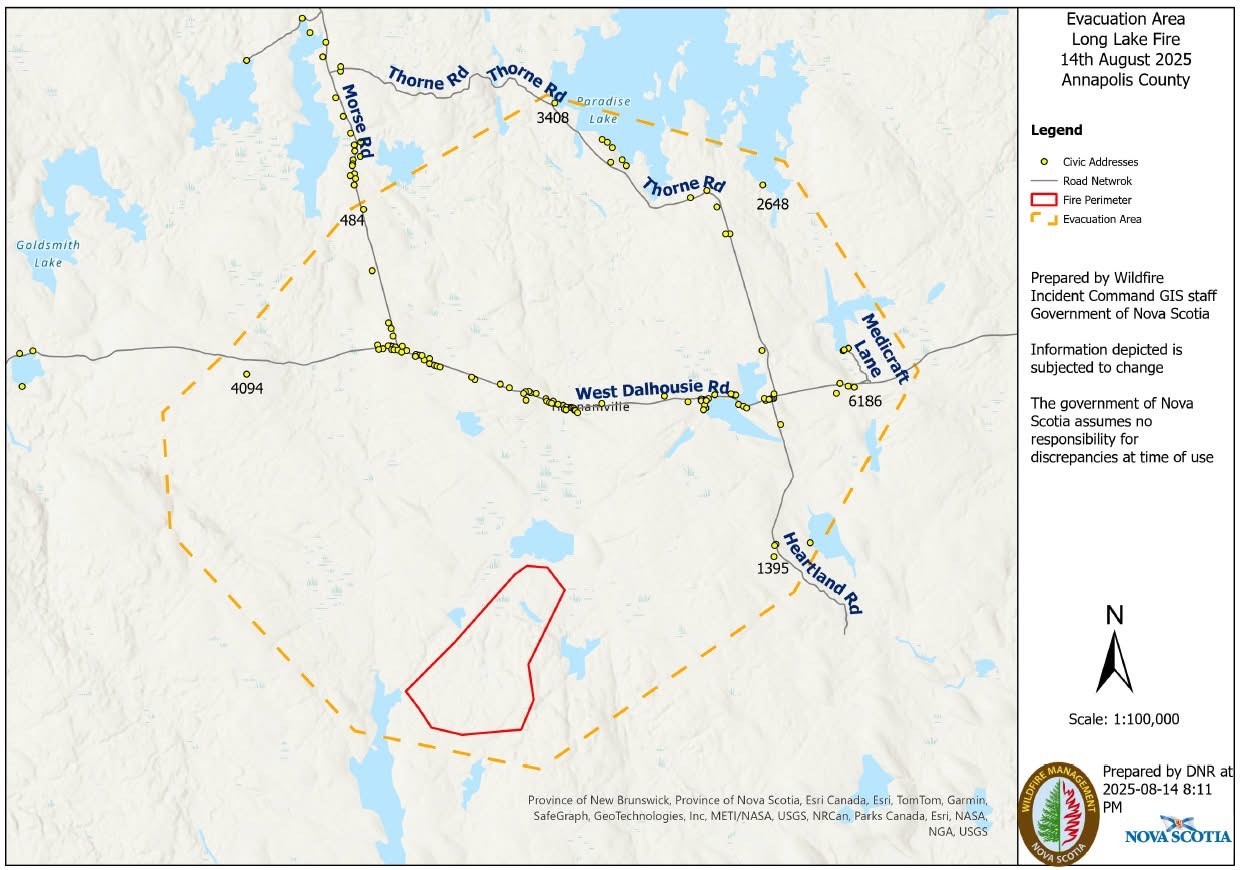
(Photo Department of Natural Resources)
Many of the same resources, along with aircraft support, continued until dusk.
The fire continued to be monitored during overnight hours, but due to extreme fire conditions and how dangerous firefighting in the woods can be, once the sun goes down, there is typically no fire fighting unless homes are in immediate danger.
All wildfires in Nova Scotia are under the jurisdiction of Nova Scotia Department of Natural Resources (DNR) which coordinates these complex incidents with the assistance of provincial and local authorities and agencies.
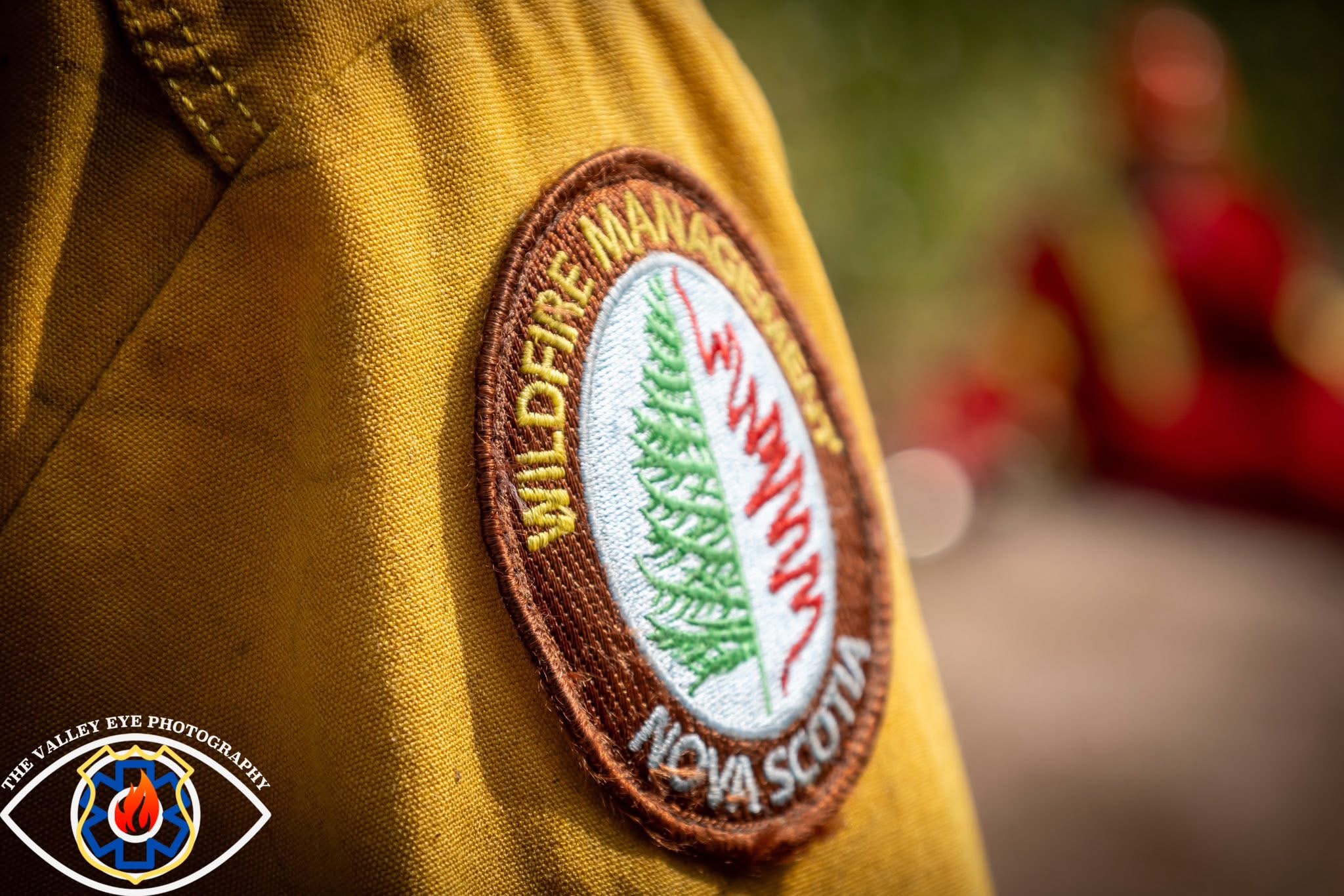
Like the days prior, many volunteer fire departments were released overnight by DNR, but were called back over the course of the week and continue to assist daily.
In the early morning of August 15th, over 1,000 lightning strikes were recorded across Nova Scotia, with heavy rain being reported in some areas. This resulted in a busy morning for firefighters all across the province as they chased smoke smells and sightings.
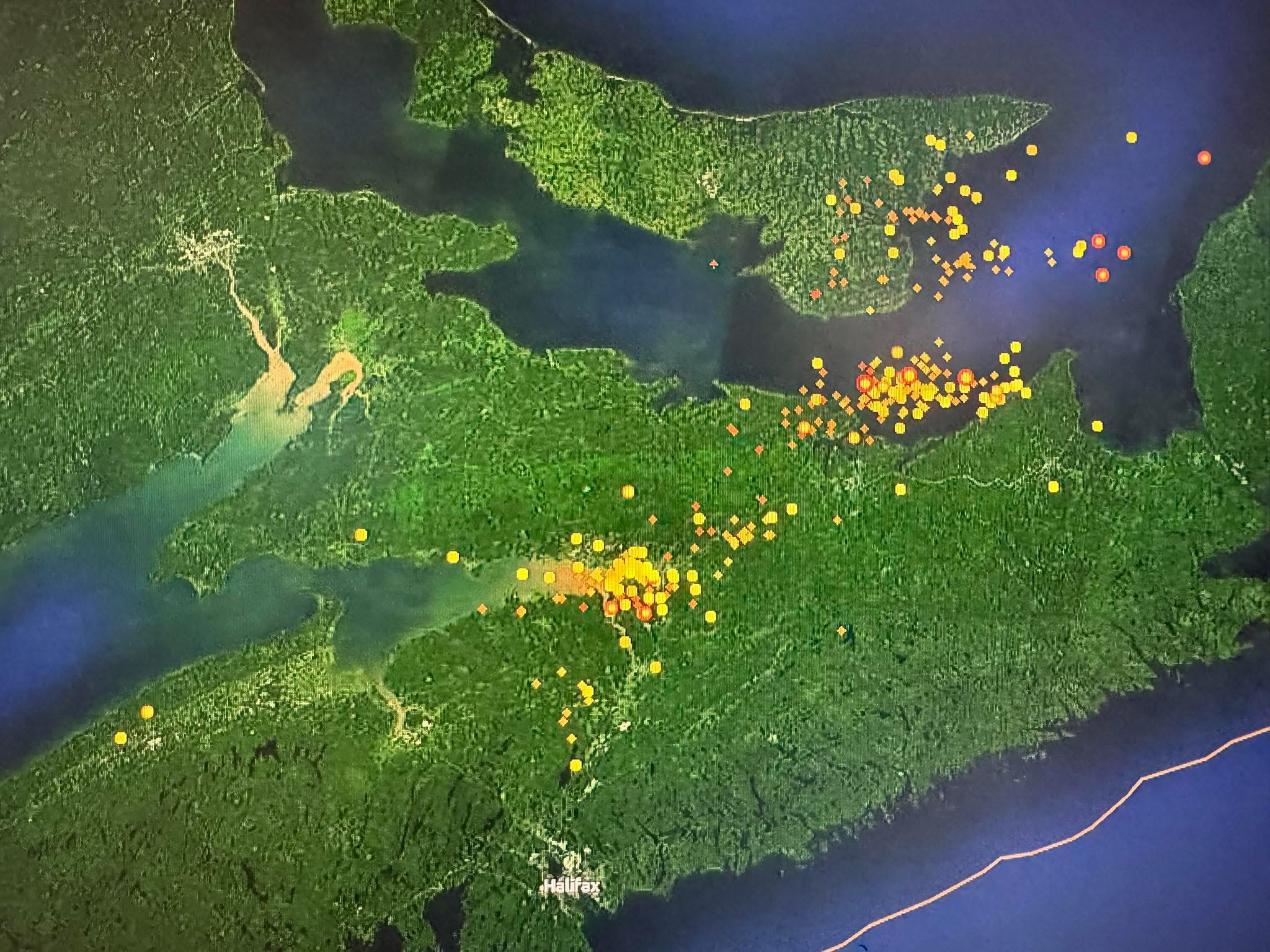
Later in the morning of August 15th, DNR reported the fire remained at the size of 406 hectares, with 33 DNR, 10 local firefighters, and the same four aircrafts on site.
The smaller fire—referred to as Hoyt Lake—that was previously reported to be 1 hectare and out of control, was now being held.
With wildfires popping up, DNR reported on August 15th that they had formed a group for the ongoing wildfires. This new title was the “Long Lake Wildfire Complex” which consisted of: Long Lake, Hoyt Lake and Durland Lake Brook wildfires. At the time, this group was managed by one incident management team that was tasked with moving resources between the wildfires as necessary.
These resources include things such as: forestry workers who are providing some relief in the woods by working to cut roadways and deploying porters, aircraft as necessary, and volunteer firefighters who are deploying sprinkler protection—a precautionary measure that dampens their targets down with water to prevent embers, sparks and/or flames from igniting whatever is endangered.
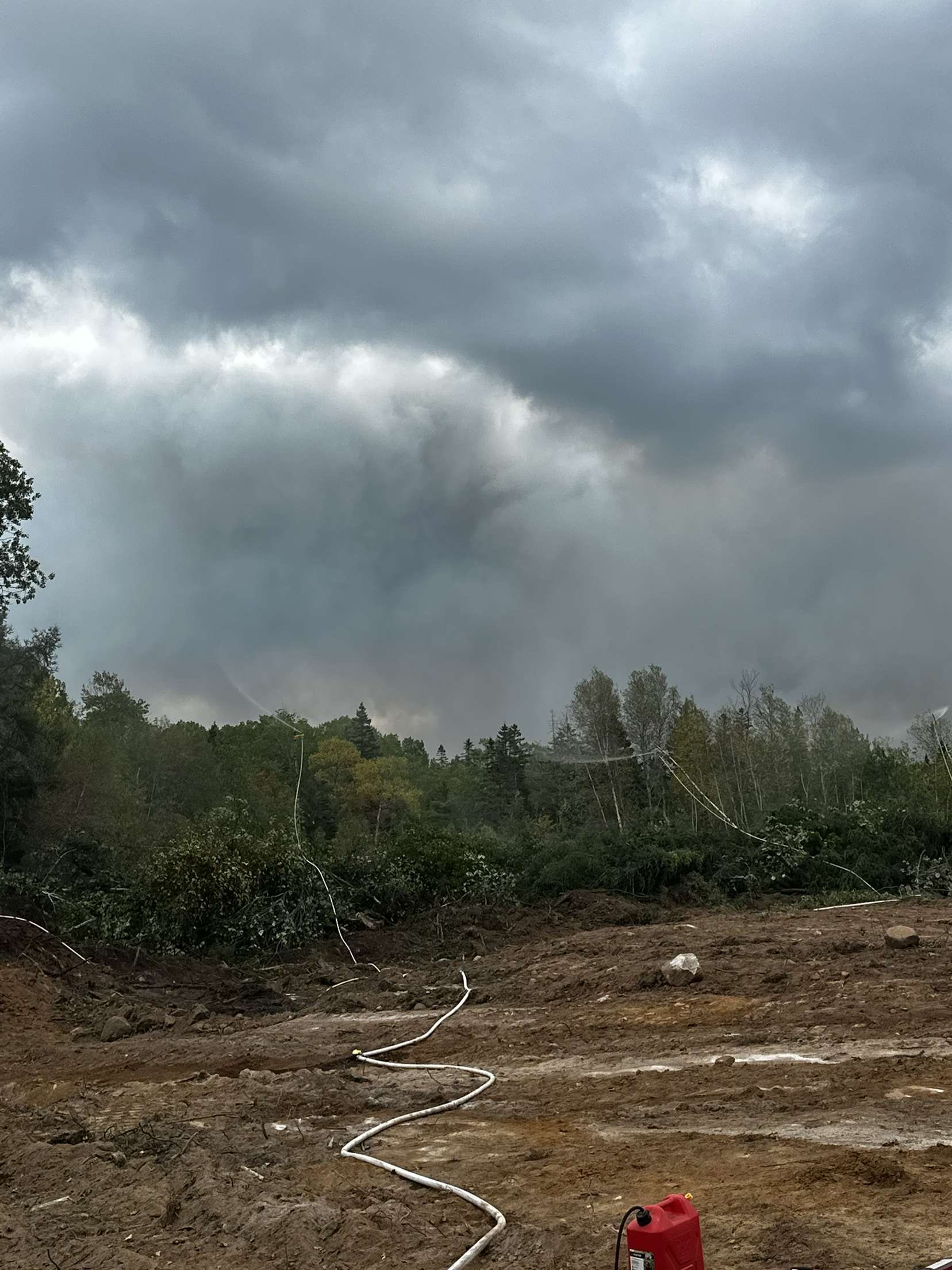
(Photo Christopher Lacey)
Shortly after noon on August 15th, the wildfire was reported to have remained the same estimated size by DNR. At the time of the new report, the crew tending the wildfire consisted of one DNR helicopter, two contracted helicopters, 33 DNR crew, and 10 local firefighters.
After 3:00PM, some much needed relief had arrived in the form of two CL-415 water bombers from Quebec. While the Hoyt lake wildfire was under control, the Long Lake wildfire remained out of control and sized at an estimated 406 hectares. It was also reported that there were four helicopters dropping water—two DNR helicopters and two contracted helicopters—as well as DNR ground crews working alongside forestry workers to continue on creating fire breaks—a barrier of cleared or plowed land intended to prevent wildfires from spreading.
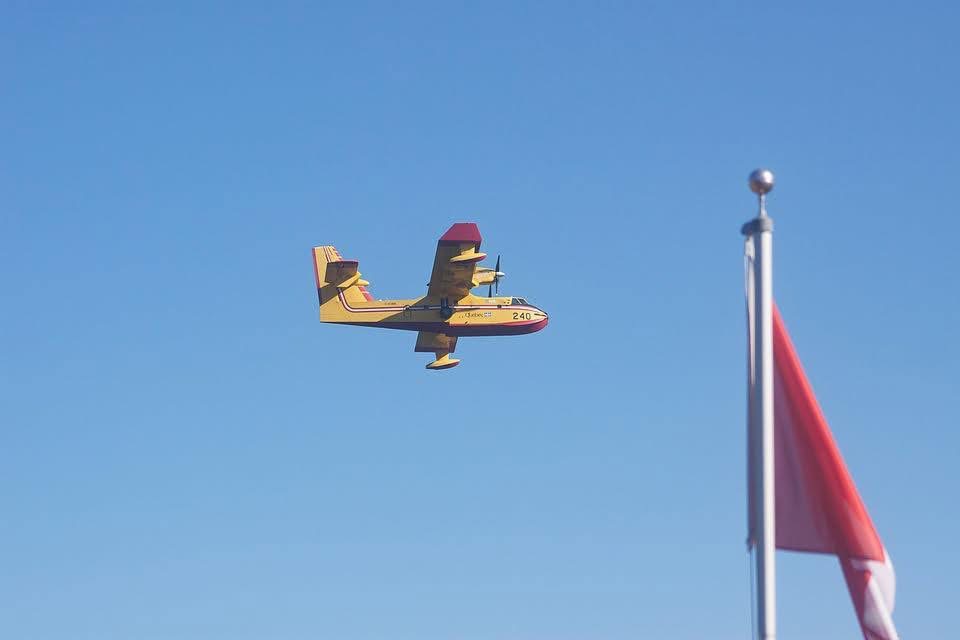
(Photo Alicia Lawson)
It was in the late afternoon of August 15th that additional mutual aid assistance was requested to West Dalhousie. This new assistance consisted of boats from Annapolis Royal and Bear River.
At some point after this, reports began to flood multiple outlets indicating that a helicopter that was fighting the wildfires had crashed into nearby lake. Thankfully it was also said that rescue efforts were well underway.
“The Department of Natural Resources (DNR) confirms that one of its helicopters crashed in shallow water at about 4:24PM today, August 15, while working on the Long Lake wildfires.”
Reports indicated that the pilot was conscious and talking with firefighters who quickly reached the aircraft. EHS LifeFlight along with a Comorant helicopter from CFB Greenwood were called to assist in the rescue operation.
Department of Natural Resources stated: “By 6:00PM he (the pilot) was rescued from his aircraft and taken for medical assessment.”
Thankfully, the experienced DNR pilot is alive and we are all wishing him the best while recovering.
DNR stated that Transport Canada investigates all aircraft incidents and they had been informed DNR would be cooperating fully.
Since the collision, there have not been reports or sightings of DNR helicopters in the air actively fighting fires. This is most likely due to the investigation of the crash which is routine.
Even with the crash heavy on their minds, firefighters continued their efforts throughout the day.
Since the fire’s inception, numerous fire departments from neighbouring regions, including far-off departments such as Brooklyn and Halifax Regional, have been engaged, providing structural protection equipment and specialized expertise.
By the morning of August 16th, the Department of Natural Resources (DNR) reported that the wildfire had doubled in size from the previous report, which had estimated its area at 807 hectares and indicated its ongoing growth. To support firefighting operations, two contracted helicopters, 44 Department of Natural Resources (DNR) crews, 4 Prince Edward Island (PEI) fire crews, and 30 local firefighters were reported to be providing assistance. Additionally, volunteer fire departments from Bridgetown, Annapolis, and Lawrencetown returned with Halifax Regional and Brooklyn to provide structural protection.
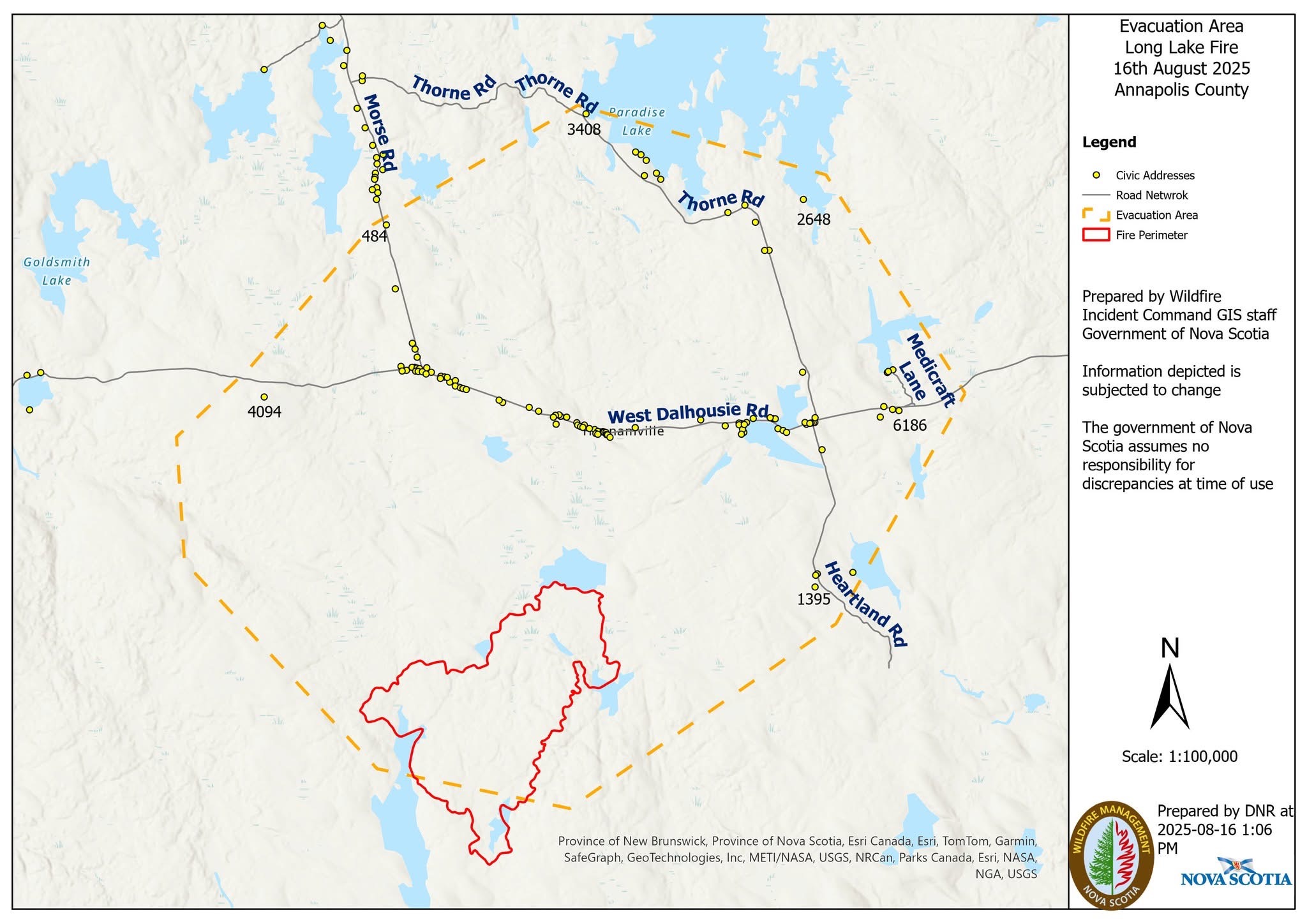
(Photo Department of Natural Resources)
On the same day, the County of Annapolis declared a local state of emergency in response to the ongoing forest fire.
“This has become a protracted incident, and our primary concern remains the well-being and safety of our residents,” said Warden Diane LeBlanc. “Declaring a state of local emergency enables us to implement the necessary measures to safeguard property and the health, safety, and welfare of the inhabitants of the affected area.”
Three days into the Long Lake wildfires, Deputy Mayor of the County of Annapolis, Dustin Enslow, provided an update to CBC, indicating that 107 residential properties were evacuated, resulting in the displacement of 215 individuals.
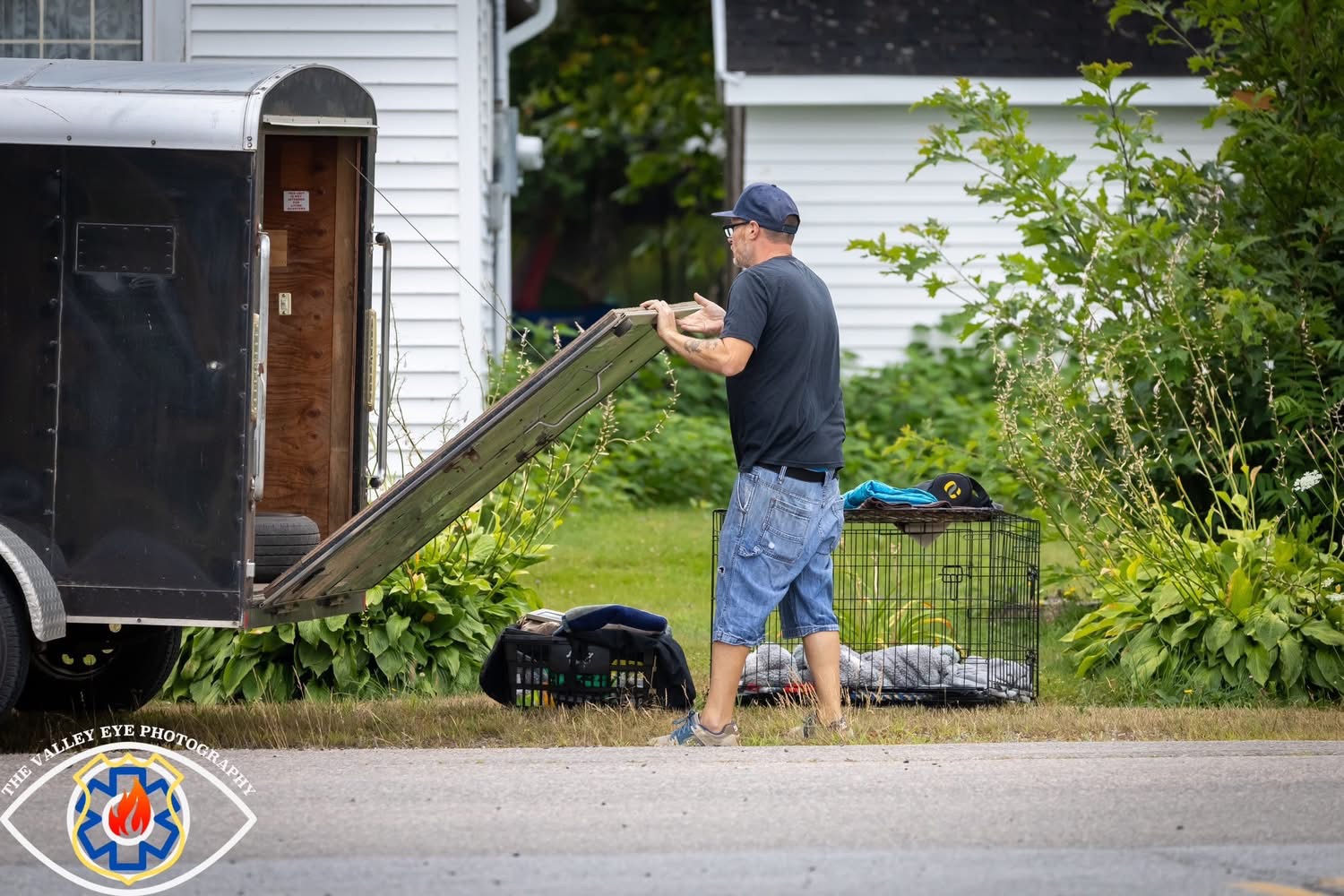
The local state of emergency remains in effect until August 22nd unless renewed.
Shortly after 1:00 PM, additional mutual aid assistance was dispatched from Annapolis, Lawrencetown, Nictaux, Middleton, Bear River, Springfield, New Germany, Northfield, and Kingston as the fire’s intensity escalated.
Crews were assigned the responsibility of transporting water via tankers to supply the sprinklers that were strategically positioned for structural protection while soaking down structures and properties.

Firefighters had established dump tanks and pumps to provide water to the sprinklers which were subsequently activated to douse the structures.
That same afternoon, the Department of Natural Resources (DNR) reported that the Hoyt fire had been brought under control, and its current area was estimated to be only 0.1 hectares prior to the 1 hectare report.
On Saturday, August 16th, additional out-of-province resources were anticipated to provide assistance. This included four Northwest Territories 802 skimmer aircrafts. These aircrafts are renowned for their ability to swiftly skim water from lakes and other water bodies with rapid turnaround times and a capacity of 800 gallons.

(Photo Neil Green)
Regrettably, due to unforeseen circumstances, they were unable to take to the air to combat the wildfires on this day as the fire expanded to an estimated 1,000 hectares while remaining uncontrolled. Two contracted helicopters, 57 DNR members, 5 PEI, and 49 from local fire departments were deployed.
In the afternoon hours, additional tankers from fire departments in Kings and Digby counties were also requested to assist with transporting water throughout the evacuation zones.
Thick, dark smoke could be observed from the vicinity of Bridgetown coming from West Dalhousie as the fire intensified throughout the day. As the evening approached, with the shift in winds, smoke began to drift across the valley floor, creating a hazy atmosphere in the sky as the sun descended. The extent of the fire was still estimated at 1,000 hectares, and the same resources were being utilized to combat it.
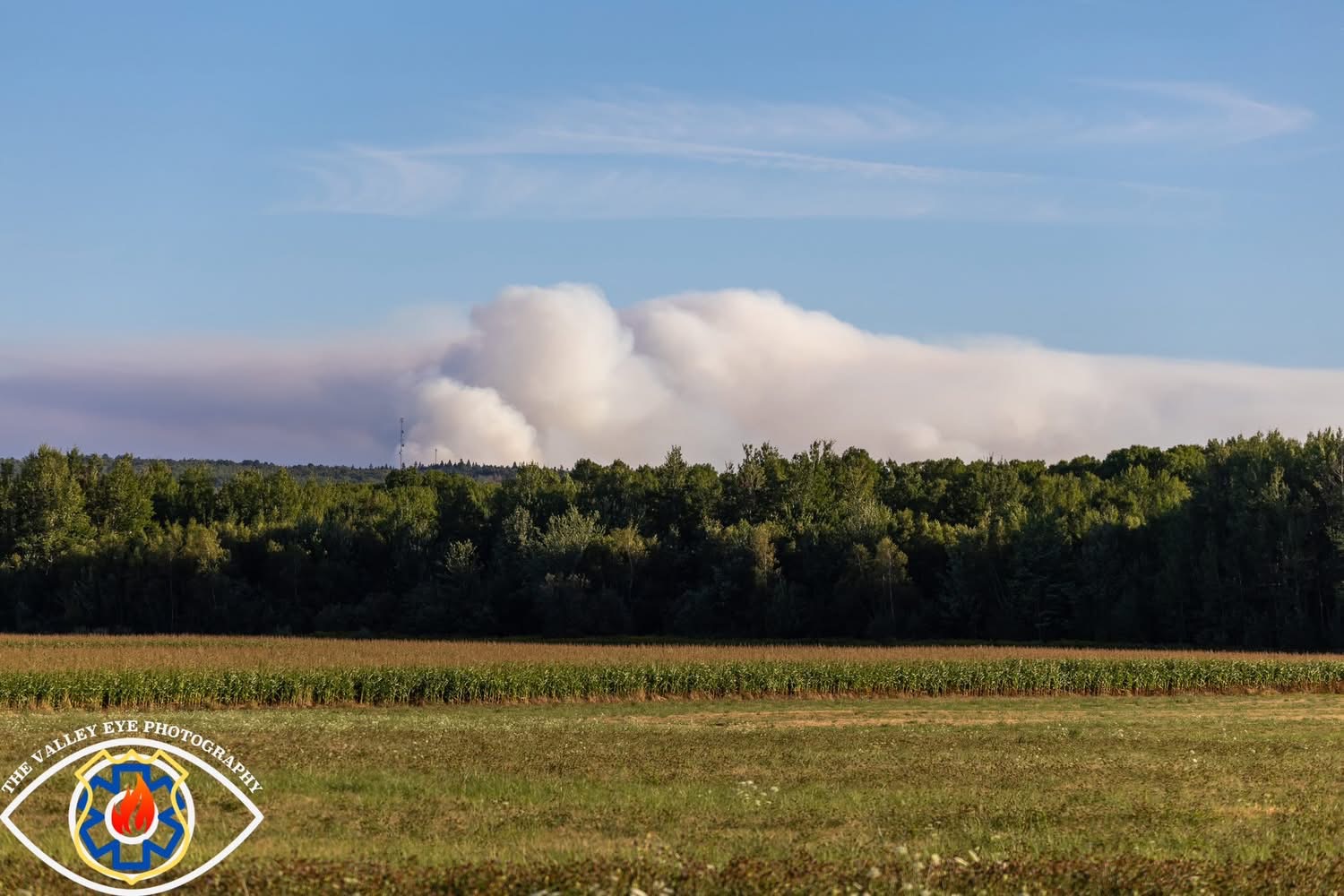
Despite the overnight shift in smoke patterns, numerous communities continued to detect smoke accompanied by a distinct haze in the sky on Sunday, August 17th. The intensity of the smoke resulted in additional air quality advisories. There were concerns among residents all over Nova Scotia that a fire was occurring in their immediate vicinity, although it was subsequently determined to be originating from the fire in West Dalhousie hundreds of kilometres away.
On Sunday morning, August 17th, the Department of Natural Resources (DNR) reported that the wildfire had expanded to 1,101 hectares. The wind’s shift caused the fire to reverse its direction and move towards West Dalhousie Road.
In response, sprinklers were activated on all residential properties, and additional protective measures were implemented such as spraying down lawns, woods, and homes. The potential for further evacuations still remains a concern.
Two contracted helicopters, along with support from 57 DNR personnel, 5 PEI personnel, and 39 local firefighters, were deployed to the Long Lake Complex. Notably, 20 DNR personnel from New Brunswick were returning, while 20 were arriving from Ontario.
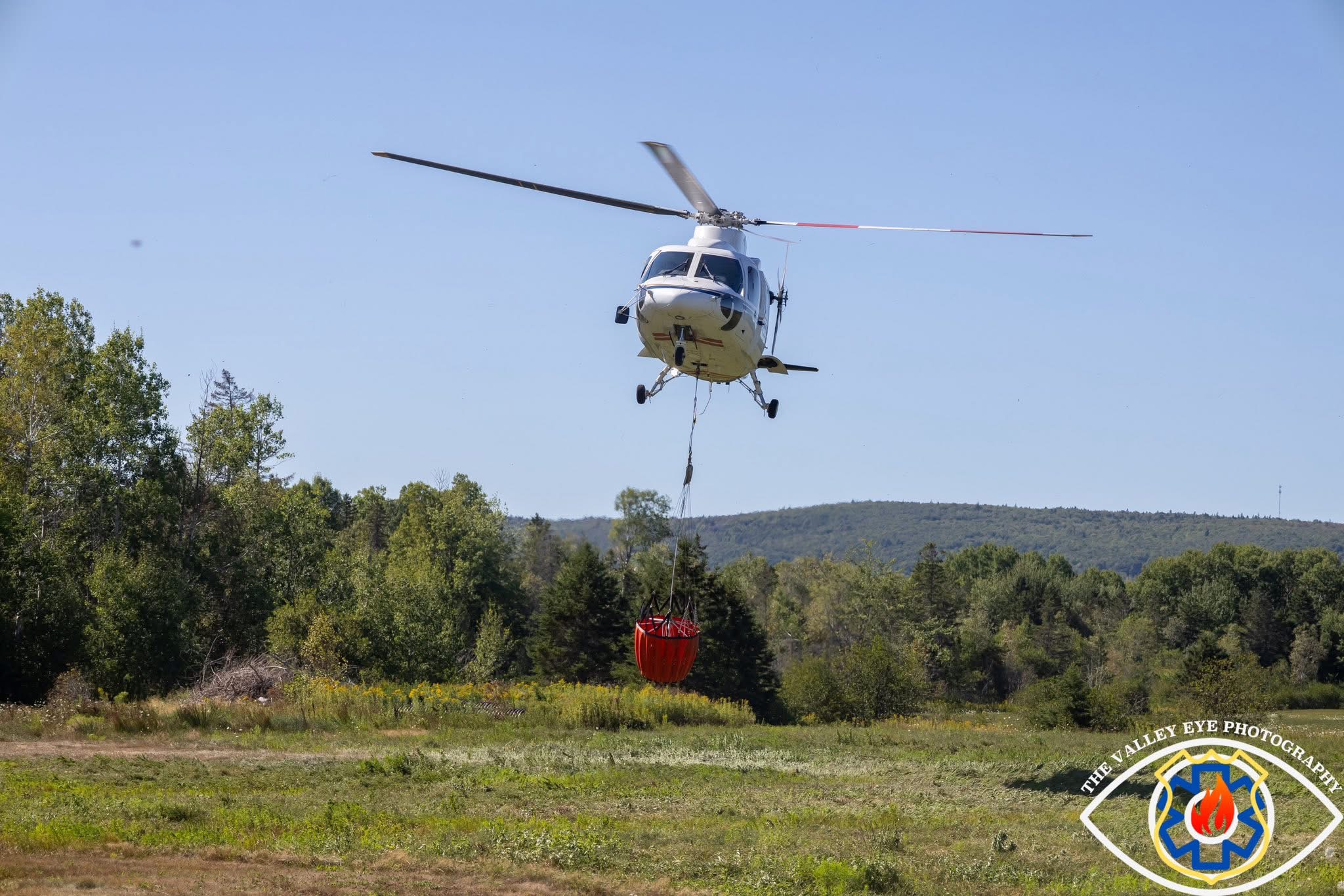
Nova Scotia Emergency Management had issued a notice to residents that smoke from the Long Lake wildfires had relocated, potentially affecting residents in other regions of Nova Scotia.
Residents were advised to contact 911 or the Department of Natural Resources (DNR) if they witness visible flames, a column of smoke, or a distinct source of smoke, including black or brown smoke, or any other indication of an active fire.
The province has provided additional information regarding wildfires and air quality, including detailed guidance for residents who may be experiencing substantial smoke levels.
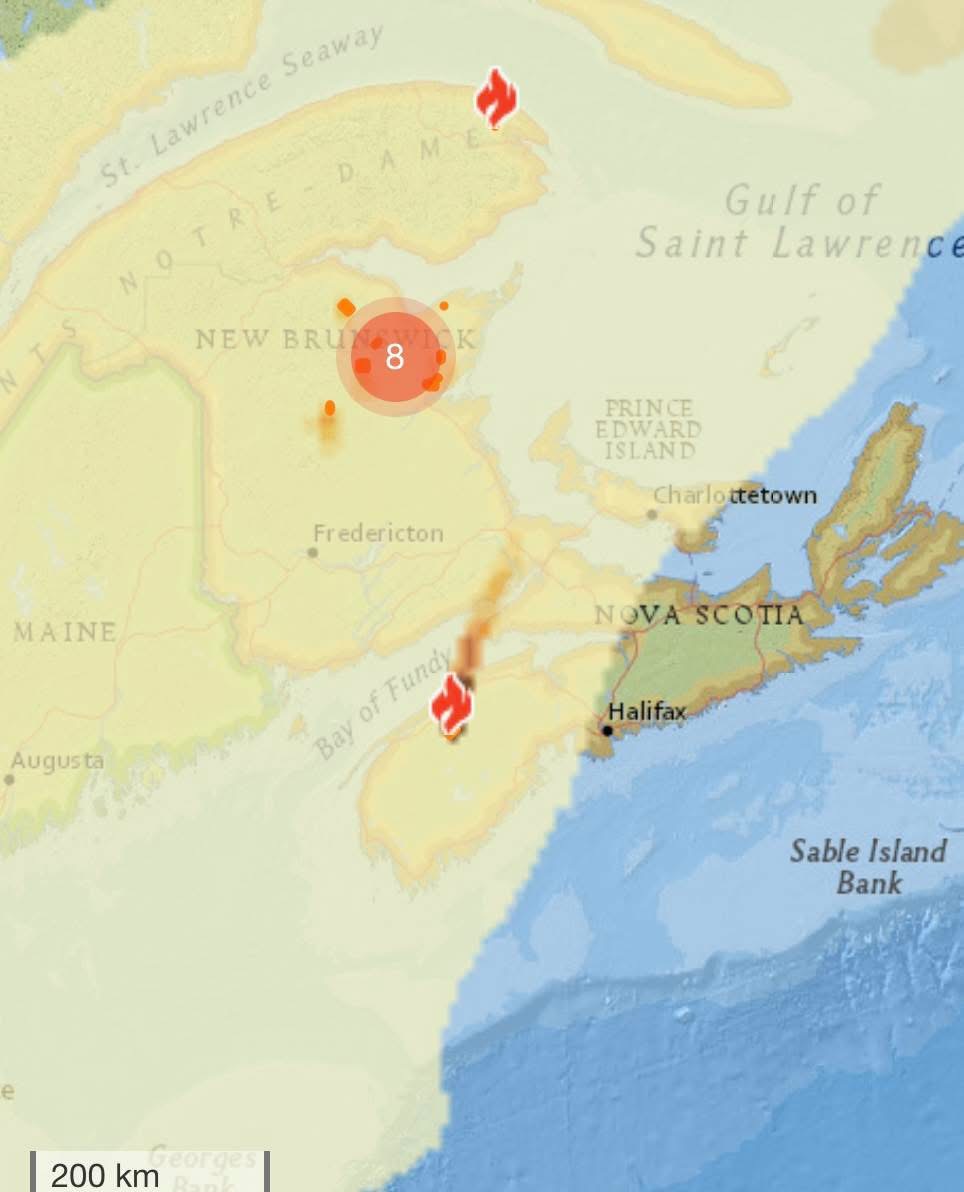
By afternoon, there was no significant change in the size of the fire or the availability of resources. The Northwest Territories skimmers were now airborne and actively engaged in combating the fire from above.
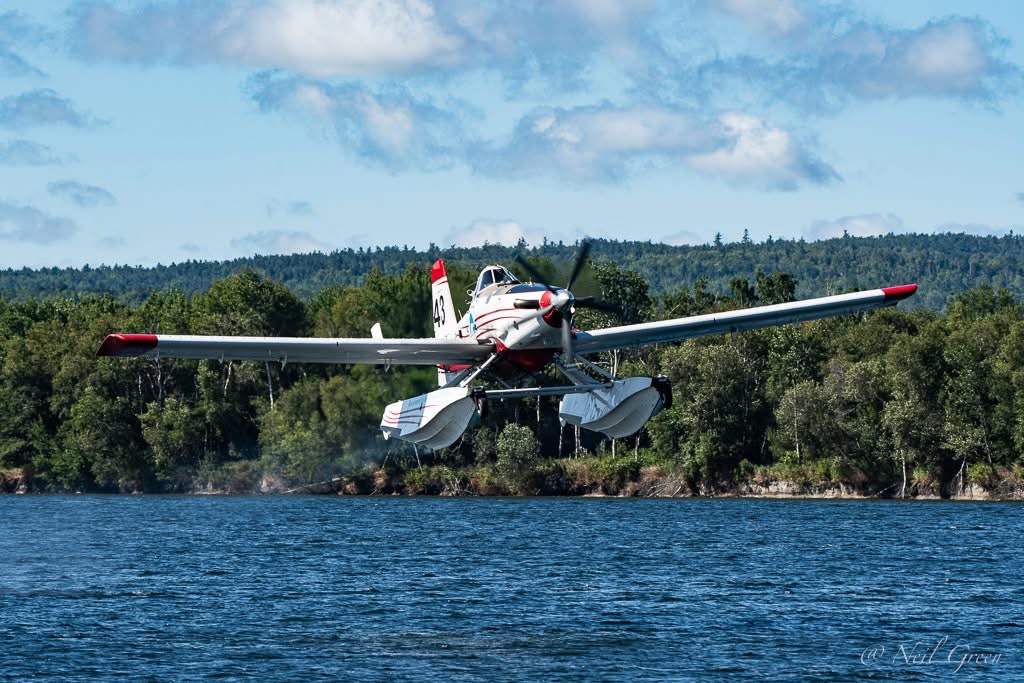 (Photo Neil Green)
(Photo Neil Green)
Annapolis REMO established a public information line allowing residents to contact them by calling 1-833-806-1515.
Throughout the day on August 17th, the fire continued to expand, necessitating the mobilization of additional volunteer fire departments to provide structural fire protection. Heavy smoke persisted, blanketing the sky from West Dalhousie.
The Waterville & District Volunteer Fire Department’s “Big Flow” was on site filling tankers, with its main purpose being to pump water. Waterville’s “Big Flow” pumped thousands of gallons to supply numerous areas for structural protection while additional engines drafted from other water sources to fill tankers.
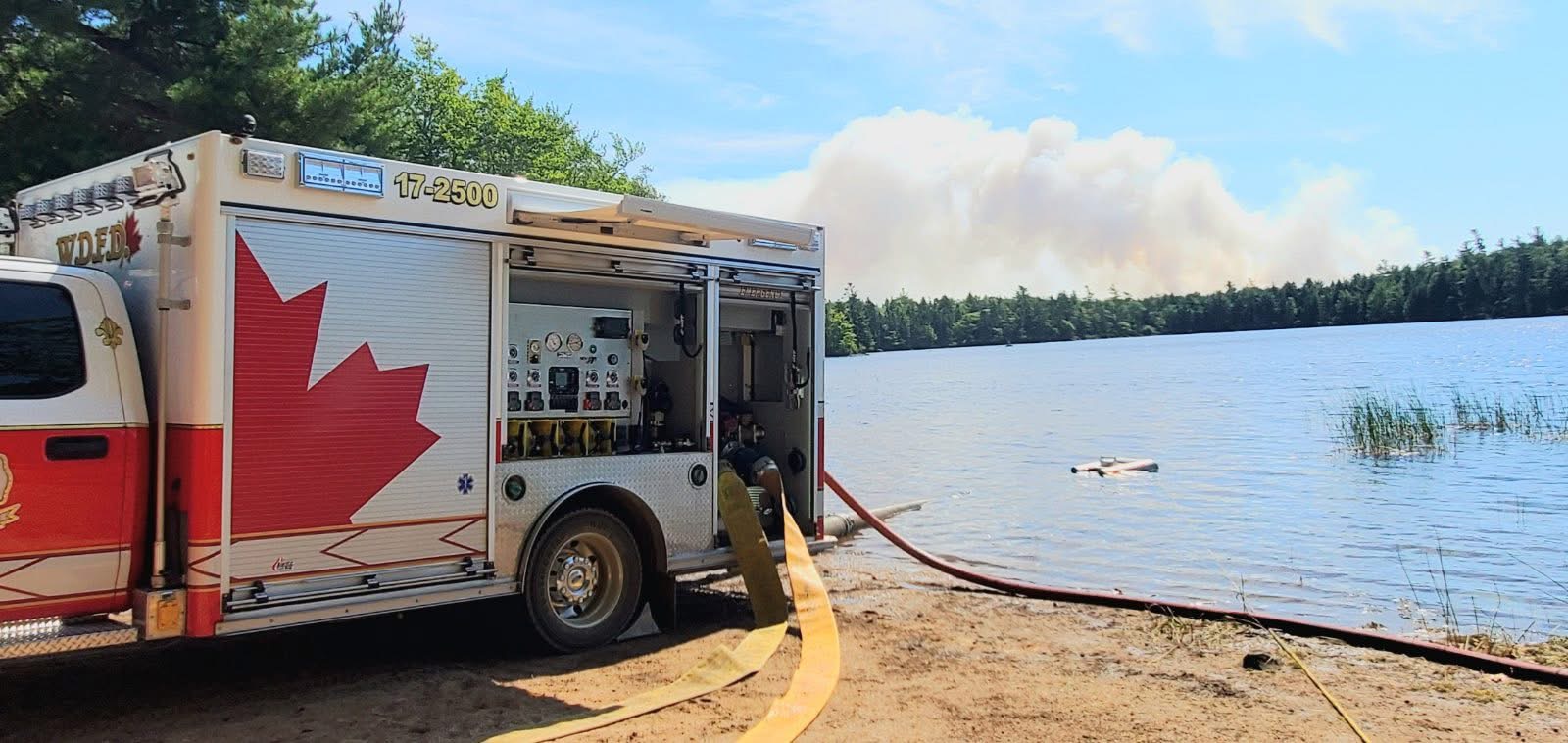
(Photo Waterville & District Volunteer Fire Department)
The precise volume of water discharged by the many trucks involved in this endeavour remains undisclosed, but it is undoubtedly substantial. Crews have sourced water from numerous lakes and have also had to replenish ponds situated nearby.
One tanker reported to have completed 25 loads with a capacity of 2,500 gallons, moving roughly 50,000 gallons of water in just one day.
Approximately 10 tankers have been on site each day they’ve been called, while moving thousands of gallons of water over the past week.
With 10 tankers shuttling and an average of 20 loads a day with a capacity of 2,000 gallons, that’s around 400,000 gallons of water a day when tankers are operating. These are just estimates, but a true testament to how much water has been shuffled from fill sites to protect the community of West Dalhousie.
To facilitate firefighting operations, Nova Scotia Power suspended power supply in the immediate vicinity, enabling crews to work safely. The power in this area has since been restored.
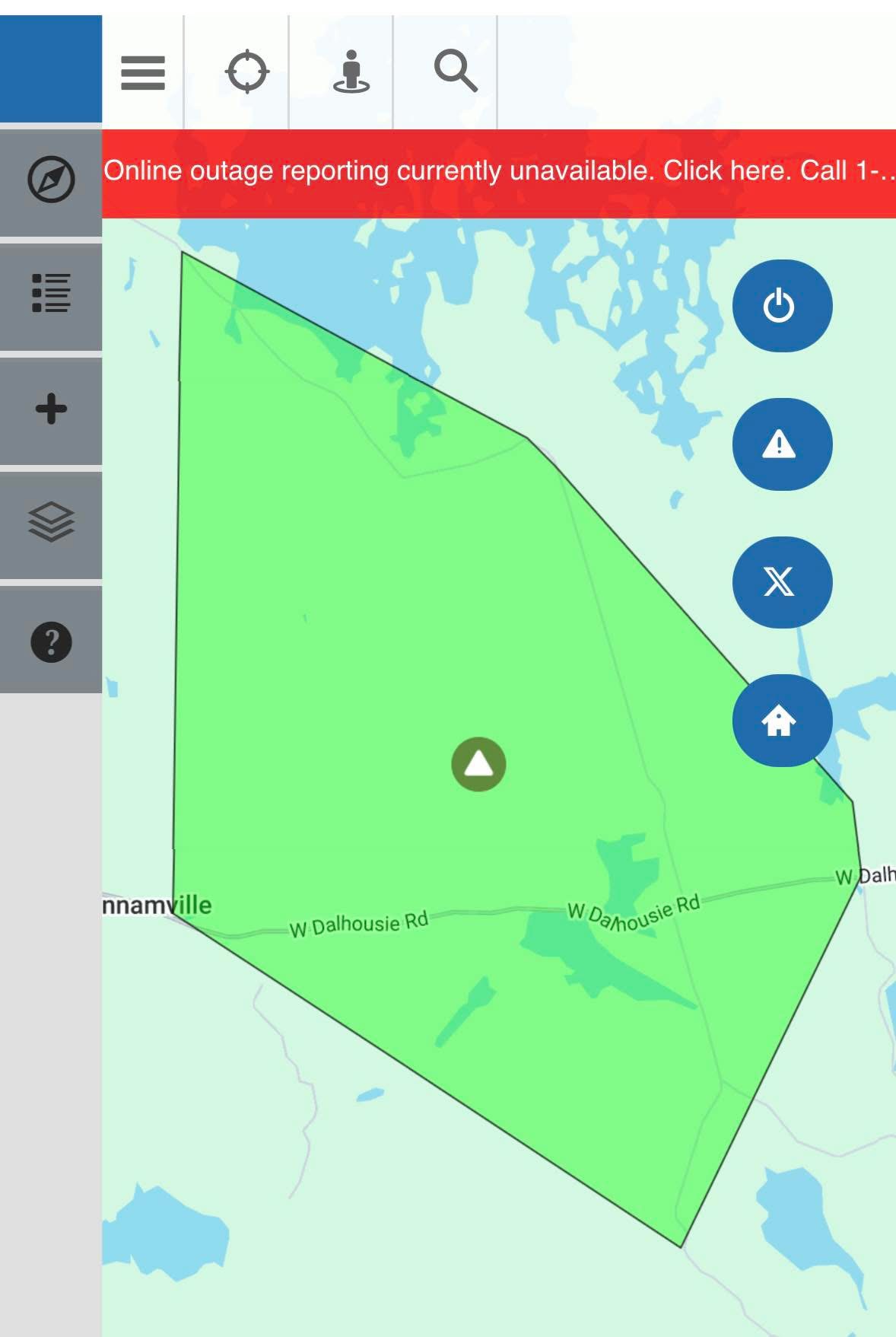
By evening, the Department of Natural Resources (DNR) reported that the fire had continued to advance, encompassing 1,977 hectares. It had progressed beyond Godfrey Lake and crossed West Dalhousie Road on one side and the south side of Spectacle Lake on the other.
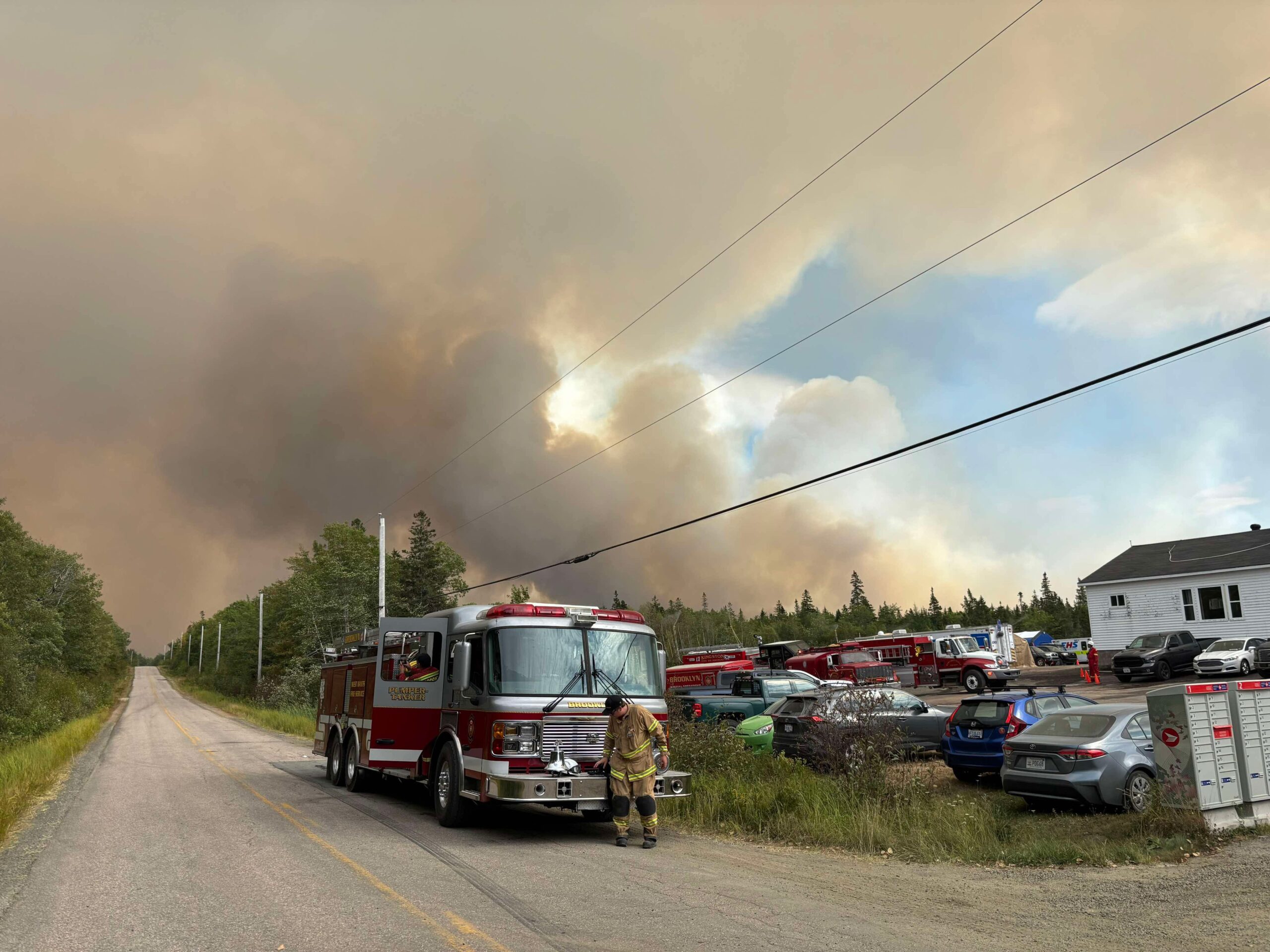
(Photo Stephen Nunn)
As a result of the sheer size of the wildfires, many communities—including Kenvtille, Kings County from a distance of 71 kilometres (44 miles) from the original wildfire site—experienced dry, falling ashes.
On the 17th of August, a substantial number of firefighting crews were engaged in the incident, including 77 from the Department of Natural Resources (DNR), 5 from Prince Edward Island (PEI), and 120 local firefighters. Their collective efforts were focused on saving homes and continuing to strategically arrange sprinklers in advance. Fortunately, there were no reports of structural damage at that time.
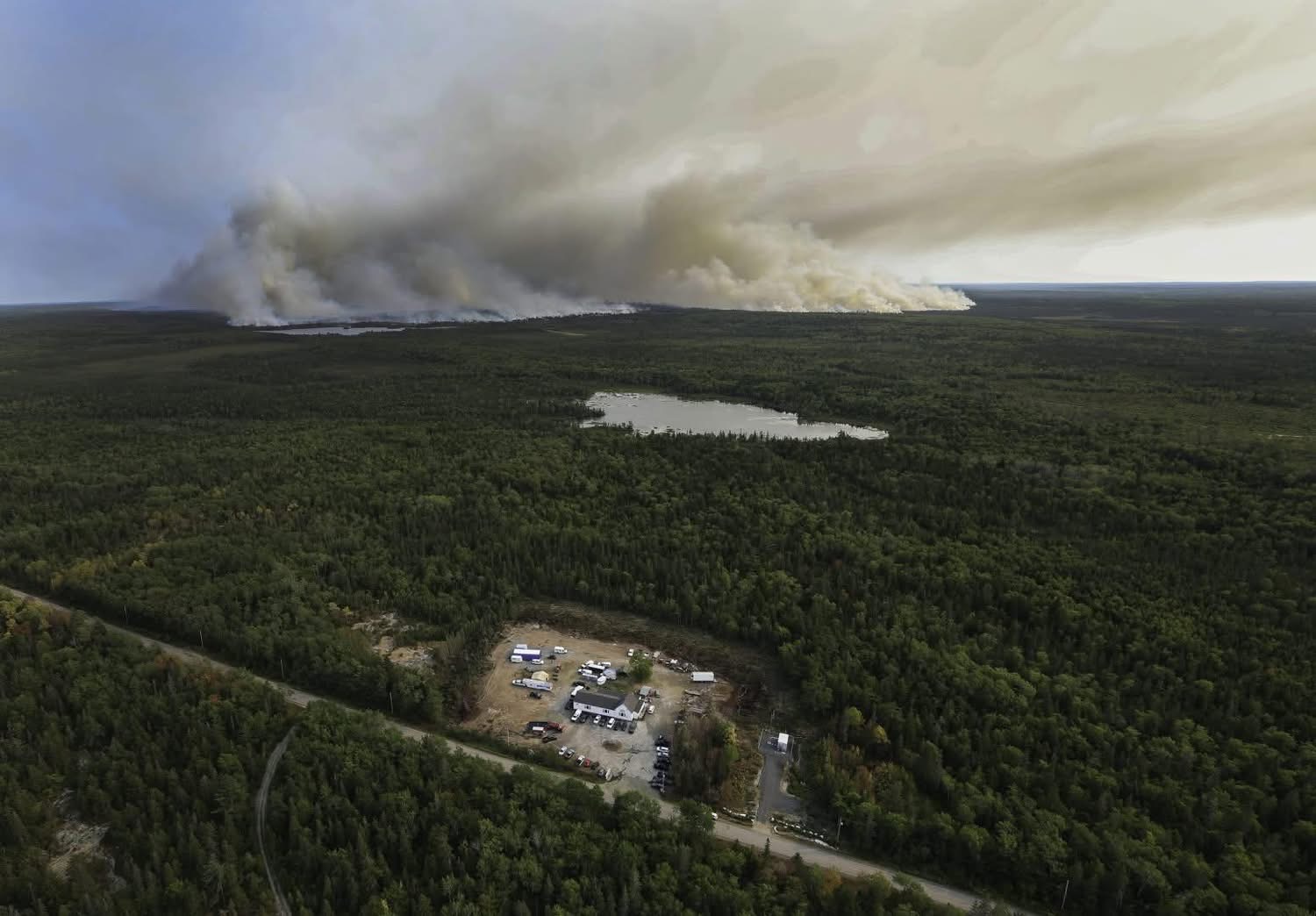
(Photo Nova Scotia Government)
Two contracted helicopters were utilized to combat the fire along with four skimmers from the Northwest Territories (NWT). However, these resources were redirected to promptly assist in extinguishing a fire in Digby County and were then returned to their base for the evening.
After nightfall, volunteer firefighters remained in the area, with additional breathing apparatus crews being dispatched to the scene. Fortunately, some much-needed relief was reported as firefighters indicated that a minor amount of rain had fallen in West Dalhousie. Although not substantial, it was enough to provide some temporary relief.
The Long Lake wildfires grew overnight to an estimated 2 063 hectares, according to a report from the Department of Natural Resources on the morning of August 18th. While no homes were damaged, there were a few campers and trailers lost as a result of the fire crossing the roads.
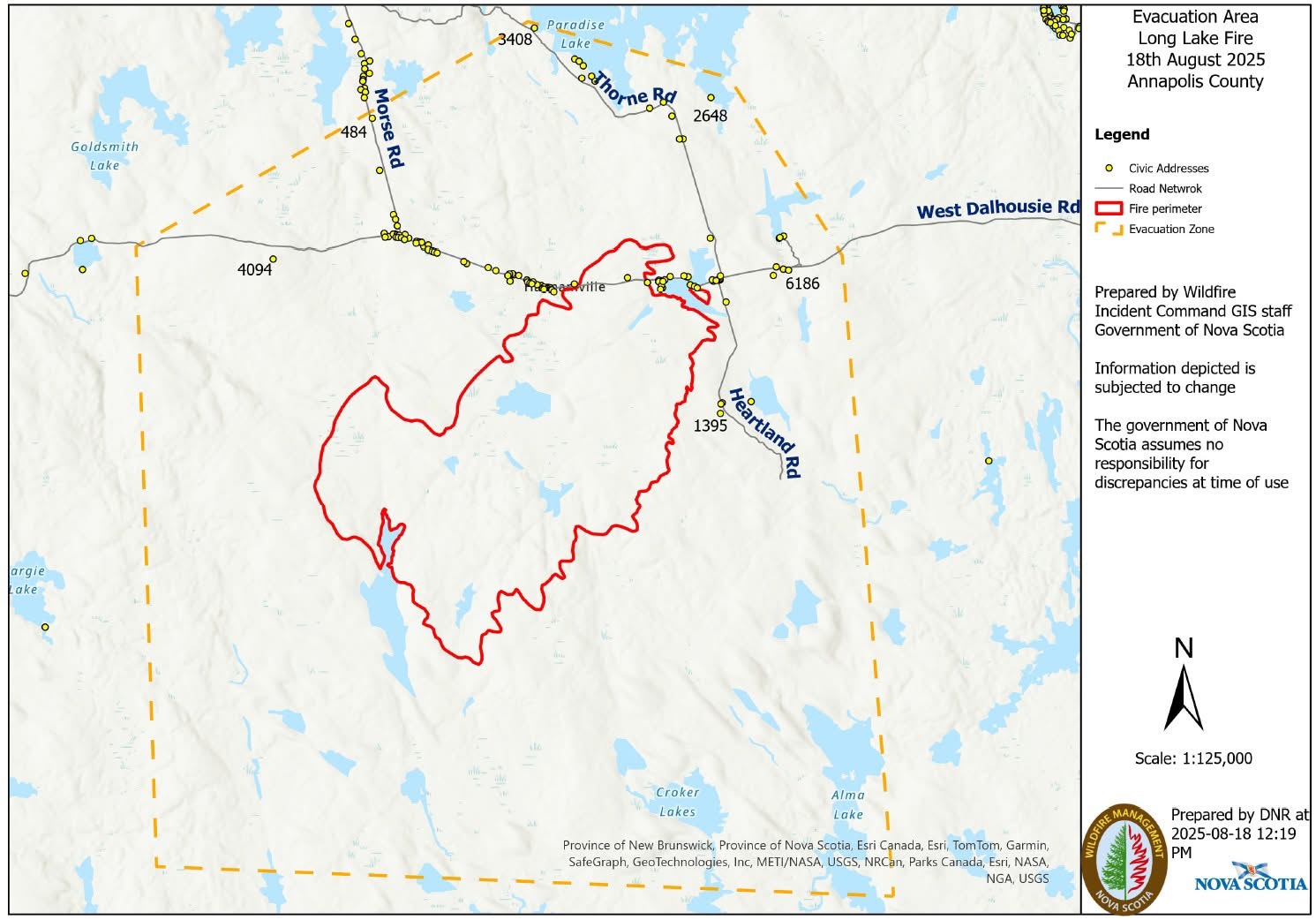
(Photo Department of Natural Resources)
Local photographer and writer, Steve Skafte, continued to document remarkable photos from the North Mountain during the day and evening, depicting the immense amount of smoke emanating from the area burning in West Dalhousie. Many local residents also witnessed the changing conditions prompting both concern and interest.
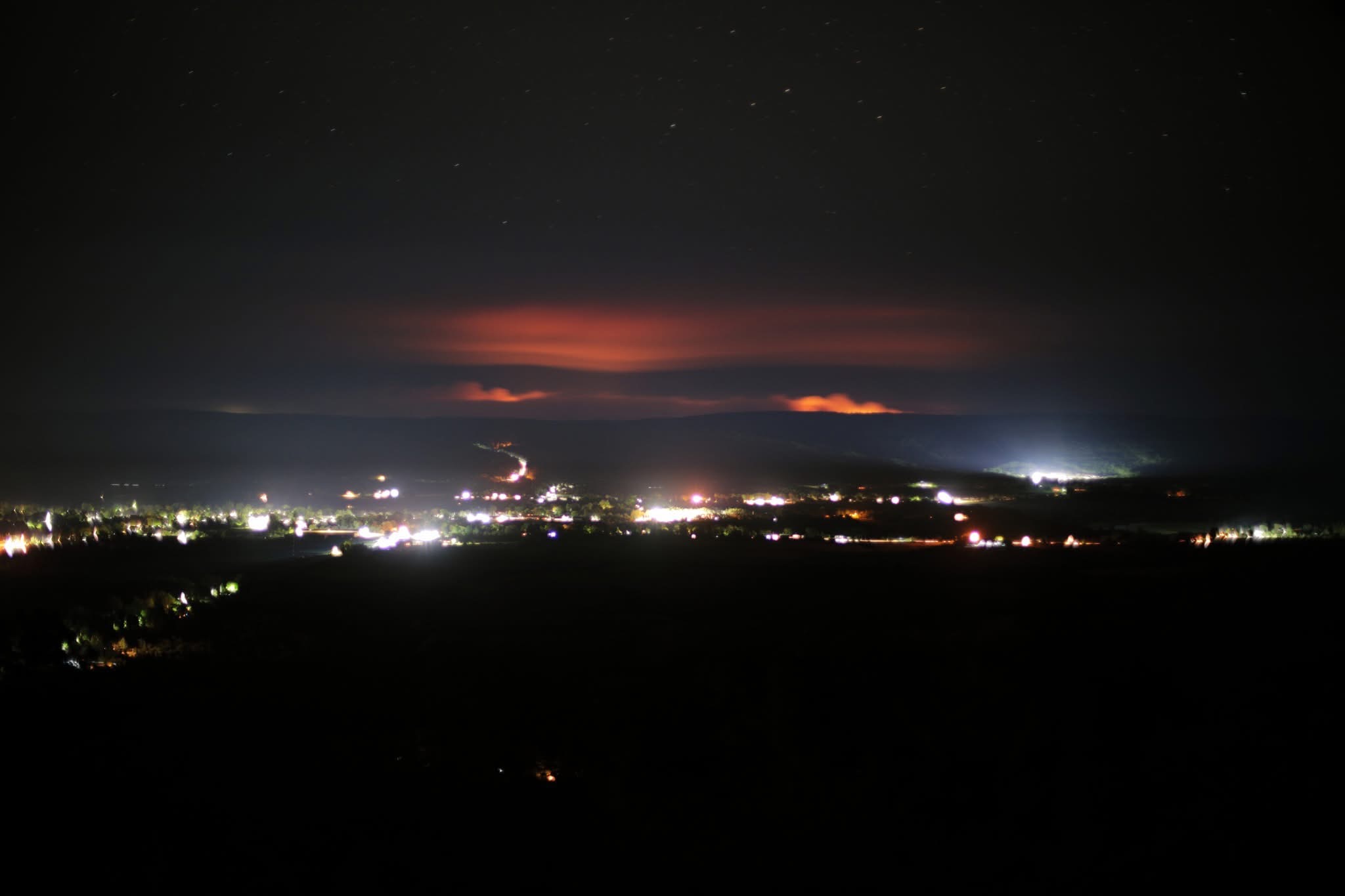
(Photo Steve Skafte)
Following the request to the federal government made by Nova Scotia, additional resources were prompted to assist in its efforts to contain the West Dalhousie/Long Lake Wildfire.
With the shifting winds and the clearing of smoke, GPS analysis permitted a more precise assessment of the affected area. The fire had expanded exponentially, reaching a size of 3,210 hectares on August 18th, significantly surpassing its initial reported dimensions.
At that time, the fire encompassed an area of 32 square kilometres. To date, firefighters have successfully safeguarded residential properties within the community, despite a few trailers and campers.
By late afternoon, the Lake Pleasant Campground announced a precautionary evacuation under the direction of its 14 Wing Commander in Greenwood. They communicated via Facebook that a mandatory evacuation would be issued by the end of the day at 5 pm on Wednesday, August 20th.
As we approach one week since the fires ignited, numerous communities continue to provide assistance through the provision of trailers, designated areas for livestock, and donations for those affected.
On that day, the ground crews consisted of personnel from the Department of Natural Resources (DNR) of New Brunswick (93), Ontario (22), Prince Edward Island (5), and 49 local firefighters.
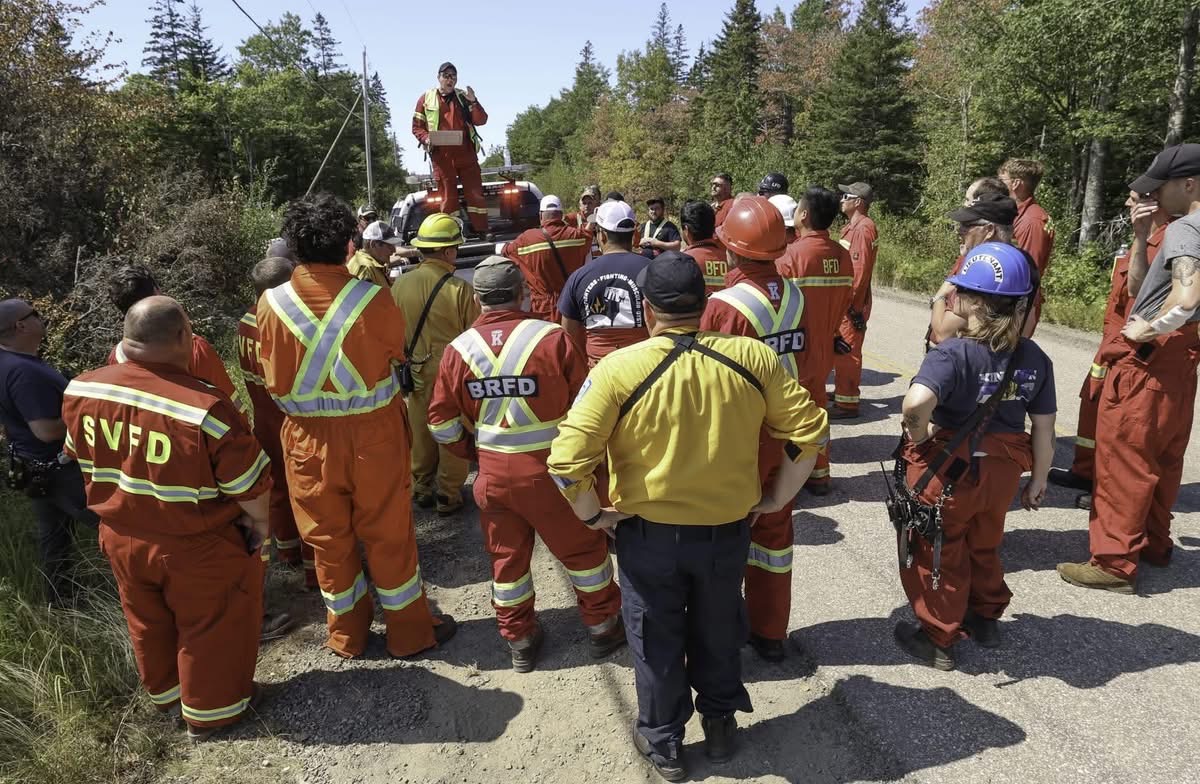
(Photo Nova Scotia Government)
Throughout the day, firefighters were engaged in various tasks, including assisting with tankers that transported water to dump tanks for structural protection and refilling ponds within the community for fire suppression efforts.
Continuous aerial support was provided by four Northwest Territories skimmers and a contracted helicopter which remained active throughout the day.
An air tanker group from Alberta, which was on loan to New Brunswick, made a swift intervention in the Long Lake wildfire before the onset of nightfall on August 18th.
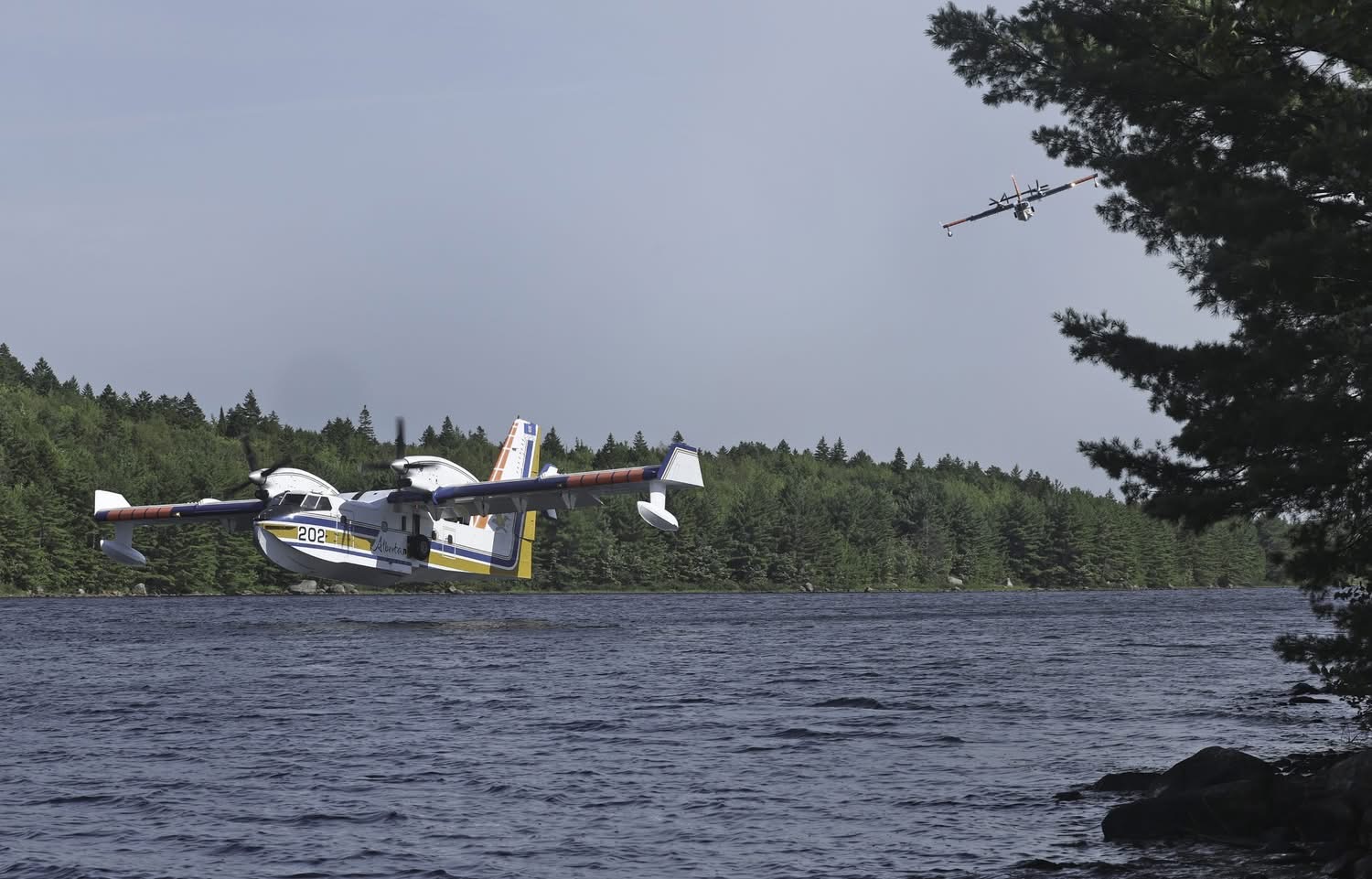
(Photo Nova Scotia Government)
Throughout the day on August 19th additional volunteer fire departments continued to work to protect homes.
Scott Tingley, manager of forest protection, stated that crews have concentrated most of their efforts over the past 24 hours on securing the area where the fire crossed West Dalhousie Road. “That is one of the areas of most concern at present,” he said. “When the winds do eventually shift back from the south, that end of the fire is where the nearest homes and values to be protected are.” (CBC News)
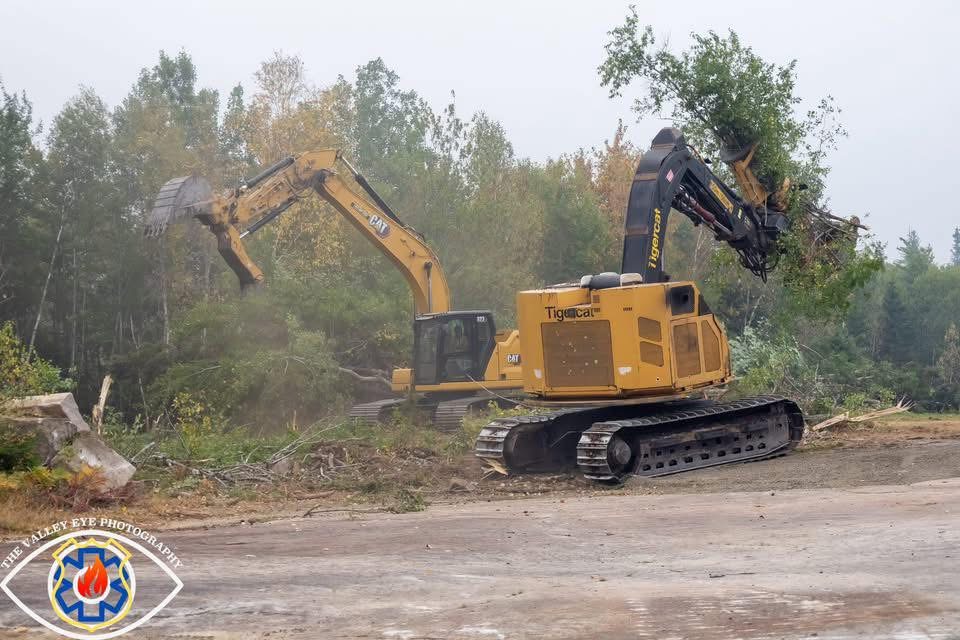
Tingley also indicated that although winds have been “relatively favourable” since Monday, he anticipates that there will be some challenging days between now and Sunday as winds become more volatile with the approach of Hurricane Erin.
With Hurricane Erin approaching, increased winds and minimal rainfall are anticipated, which further heightens concerns.
On August 19th, the Long Lake wildfire continued to escalate, exhibiting signs of increased intensity throughout the day.
While there were reports of minimal growth south of Five Finger Lake, the official size estimate for the fire remains at 3210 hectares. Notably, there have been no reports of damage to residential properties, which can be attributed to the effective sprinkler protection that has safeguarded these structures.
Throughout the day on Wednesday, Department of Natural Resources continued to update on the fire which remains estimated at 3210 hectares and has not grown in size for approximately two days.
Firefighters and aircraft continue to protect homes, fight hot spots, and create dozer guards. DNR reported that protections were near completion on the northern border of the Long Lake Wildfires to protect homes when Hurricane Erin arrives, which in turn, could ignite hot spots.
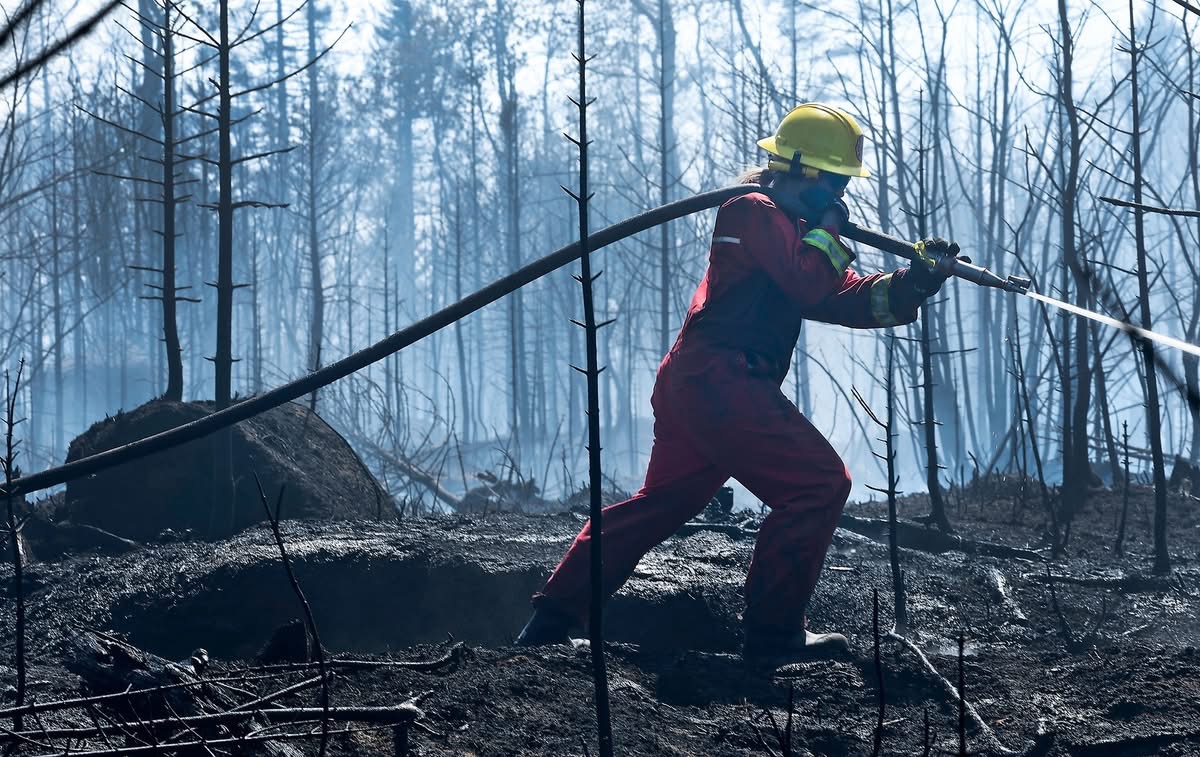
(Photo Nova Scotia Government)
In response to the ongoing fire, crews from various agencies are actively engaged in efforts to combat the blaze. The Department of Natural Resources (DNR) has deployed 93 personnel, while 22 firefighters from Ontario arrived yesterday.
Three Alberta CL215T water bombers have been reintroduced to the scene, equipped with a capacity of over 1,400 gallons per drop. Their presence has been instrumental in enhancing suppression efforts on Tuesday.
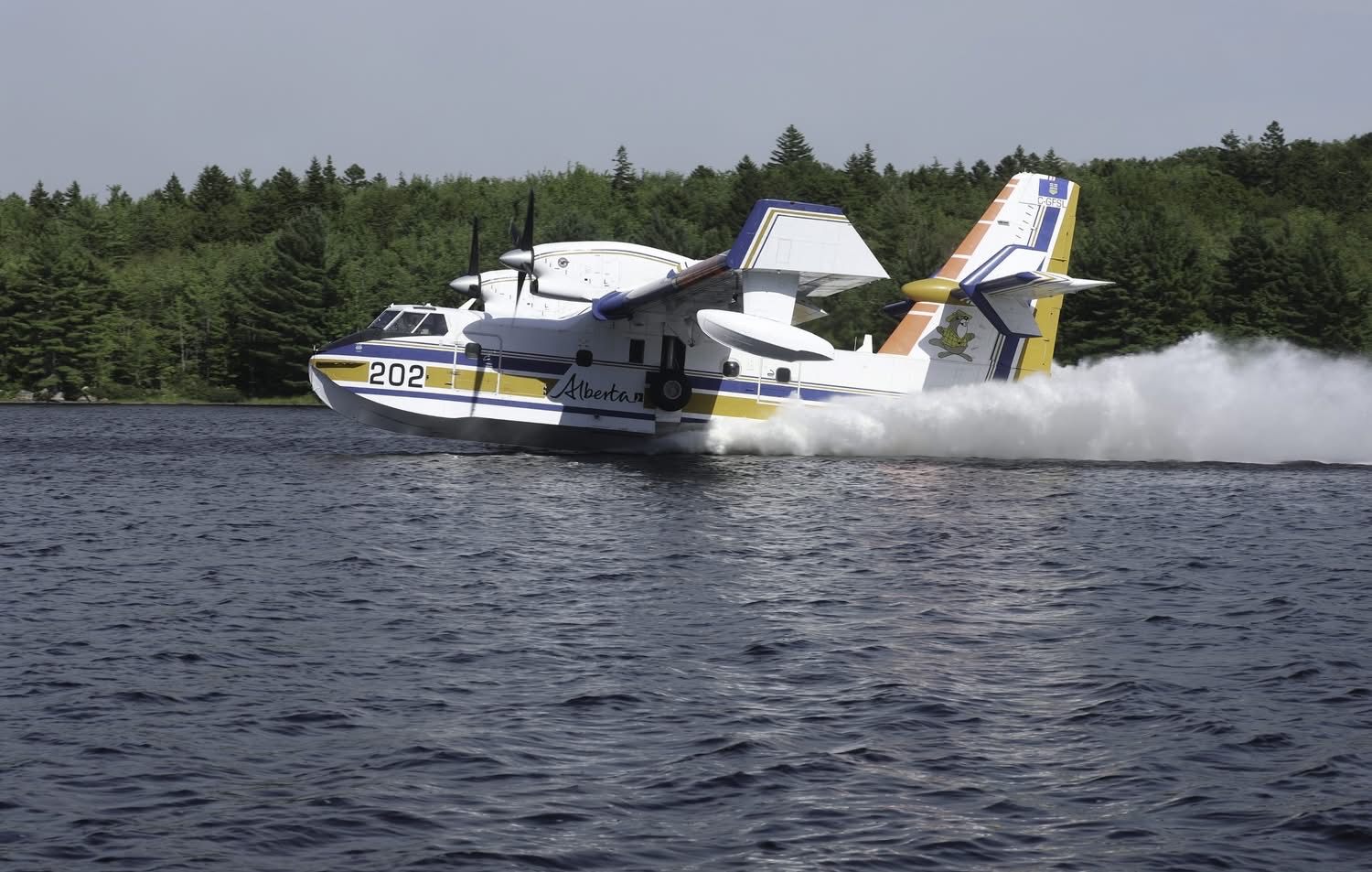
(Photo Nova Scotia Government)
Nova Scotia Premier Tim Houston announced on Monday that three additional helicopters from Saskatchewan were on the way to assist in the firefighting operations.
Additional resources from Saskatchewan with helicopters and water bombers from Manitoba arrived in Nova Scotia yesterday.
“Manitoba is sending two Canadair CL-415 water bombers, as well as a third aircraft, to the Maritimes to help combat wildfires have intensified there in recent days. A provincial spokesperson emphasized that, ‘Manitoba could fulfill the asks from Nova Scotia without impacting the capacity to meet our province’s needs.’” (The Free Press, Manitoba)
Manitobas CL-415 air tankers hold approximately 1,600 gallons of water in a single load, bringing in much needed heavy lifting.
Numerous agencies have contributed to this endeavour, including the Department of Natural Resources, the host volunteer fire department in Bridgetown, mutual aid departments from across Annapolis, Kings, Digby, Hants, Queens, and Lunenburg counties, as well as Halifax Fire. DNR crews from Prince Edward Island and Ontario, EHS Paramedics, Royal Canadian Mounted Police, Public Safety Field Communications, Conservation, Department of Public Works, Annapolis GSAR, forestry companies and workers, Nova Scotia Guard, Canadian Red Cross, Salvation Army, County of Annapolis, Annapolis REMO, Province of Nova Scotia, Emergency Management, as well as other agencies that may not be explicitly listed.
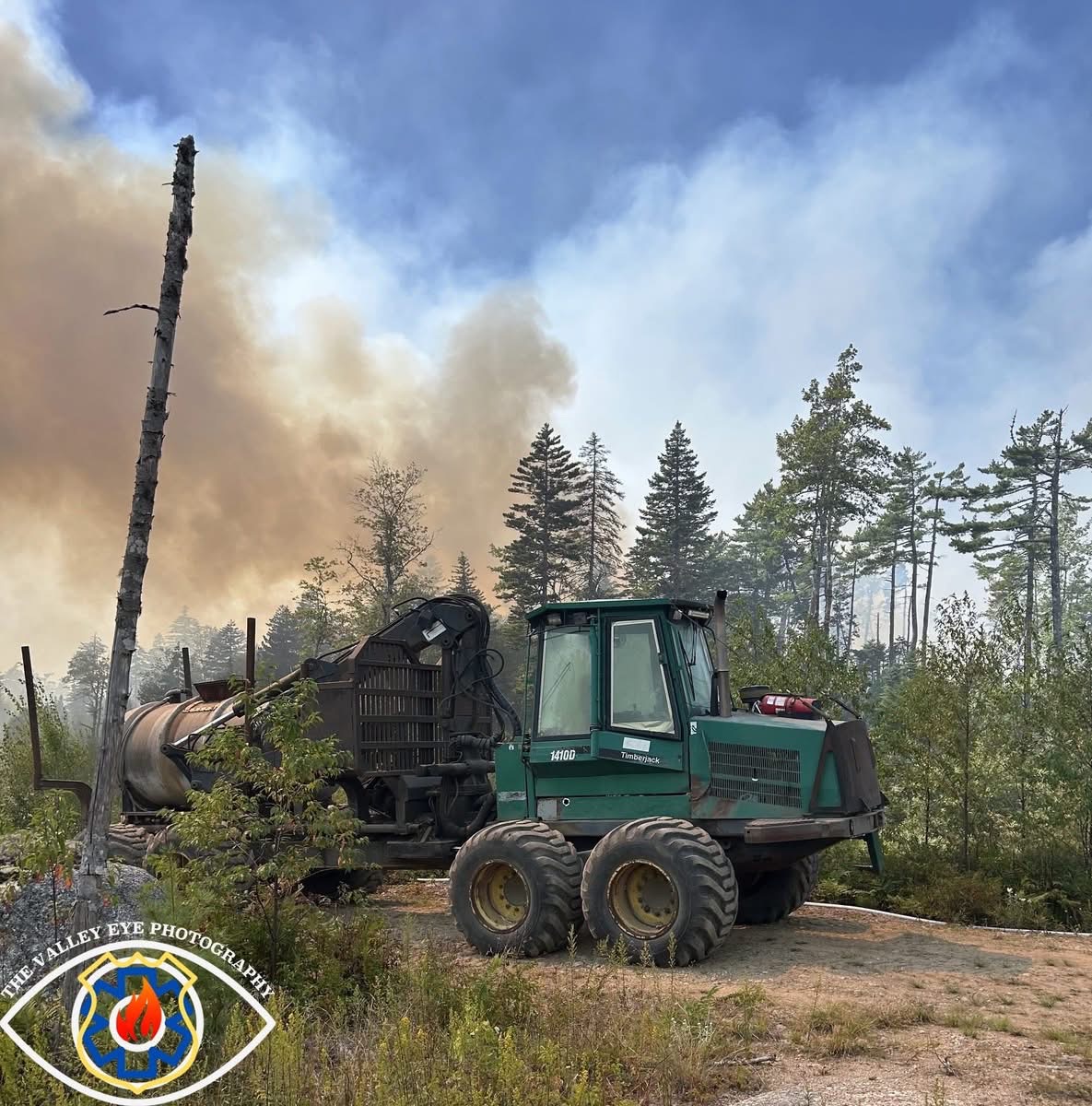
Additionally, air assets from Department of Natural Resources, Northwest Territories, Alberta, New Brunswick, Quebec, Manitoba, and Saskatchewan, as well as contracted aircraft have all been assisting.
The amount of land burned from the West Dalhousie / Long Lake Wildfire is the equivalent of approximately 7,928 average football fields when converted.
In total, the Long Lake Wildfire encompasses 32 square kilometres. The towns of Wolfville, Kentville, and Berwick collectively account for roughly 26 square kilometres, totalling less than the area covered by the Long Lake Fire.
In 2025, 139 wildfires have been reported across Nova Scotia, resulting in approximately 3,233 hectares of land being burned. Notably, the Long Lake Wildfire, situated in West Dalhousie, accounts for approximately 98% of this devastation.
The absence of significant rainfall across Nova Scotia has exacerbated fire conditions, creating an ideal environment for wildfires to spread rapidly.
Therefore, it is imperative to promptly extinguish and contain wildfires upon their initial occurrence to mitigate their spread and minimize potential damage.
Mandatory evacuations in West Dalhousie remain in place with many taken from their homes waiting until it’s safe to return.
Dahl Dispatch has reported 29 fire departments from seven counties have collectively contributed to the Long Lake wildfires in West Dalhousie thus far with more anticipated to assist in the coming days.
Commendation to all emergency service dispatchers who have made a substantial contribution to answering 911 calls and dispatching incidents over the past week.
Special recognition extends to Shubie Radio Communications Centre, Valley Communications, Digby Dispatch, Scotia Business Centre, Halifax Integrated Emergency Services, RCMP Operational Communications Centre (OCC), and Cape Breton Regional PSAP.
Our community has demonstrated remarkable unity in providing support to our local firefighters, firefighters from across Canada, and the numerous evacuees displaced from their homes.
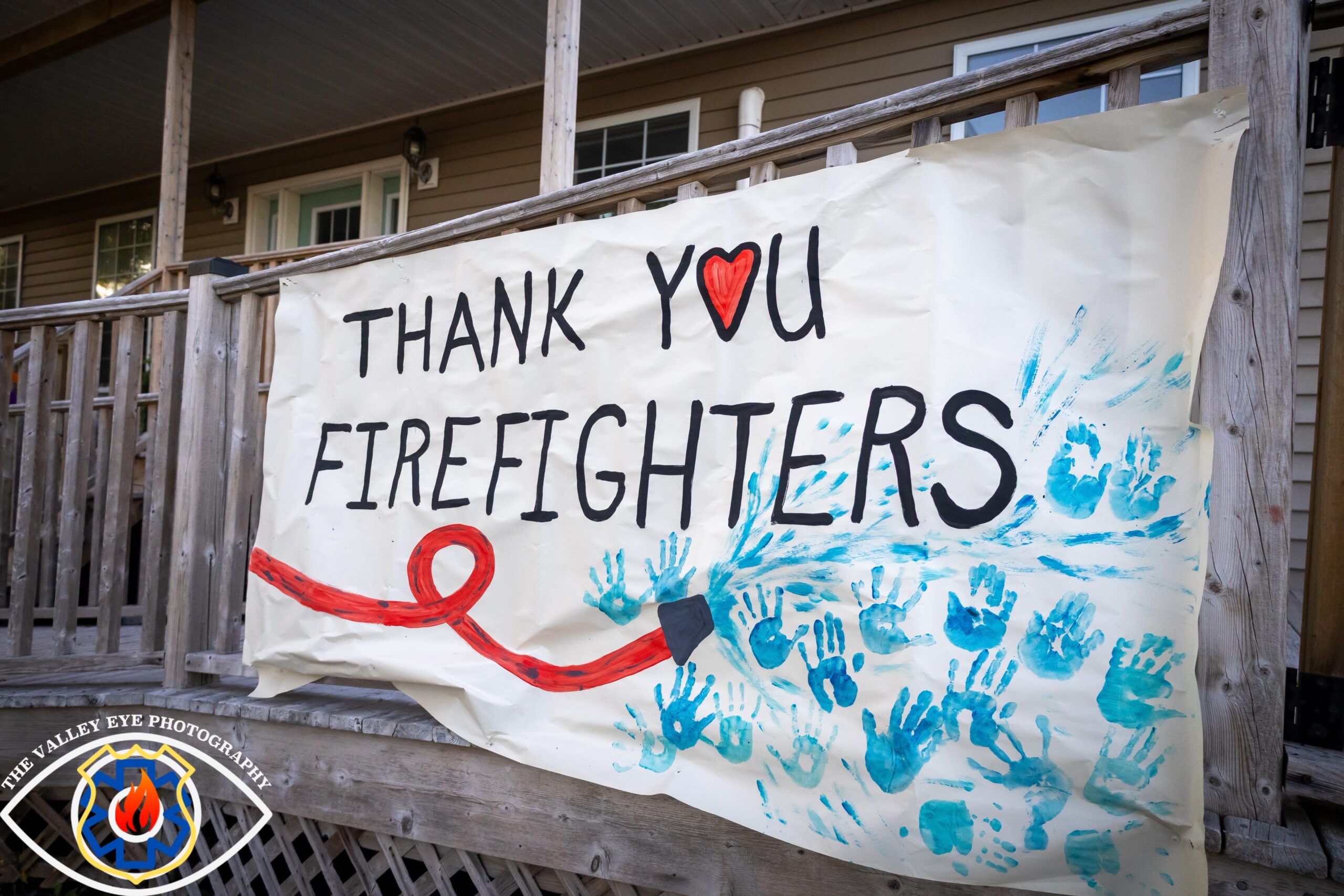
We express our gratitude for the unwavering efforts and continuous support of all involved as crews strive to contain this extensive fire affecting a small community within the Annapolis Valley.
It is imperative to acknowledge that fire suppression efforts are ongoing and will likely persist for the foreseeable future until the fire is fully extinguished.
Information via Department of Natural Resources, Nova Scotia Government, Halifax Regional Municipality, CBC News, The Free Press in Manitoba, Dahl Dispatch, Local Fire, and on scene coverage.
Adrian J.

